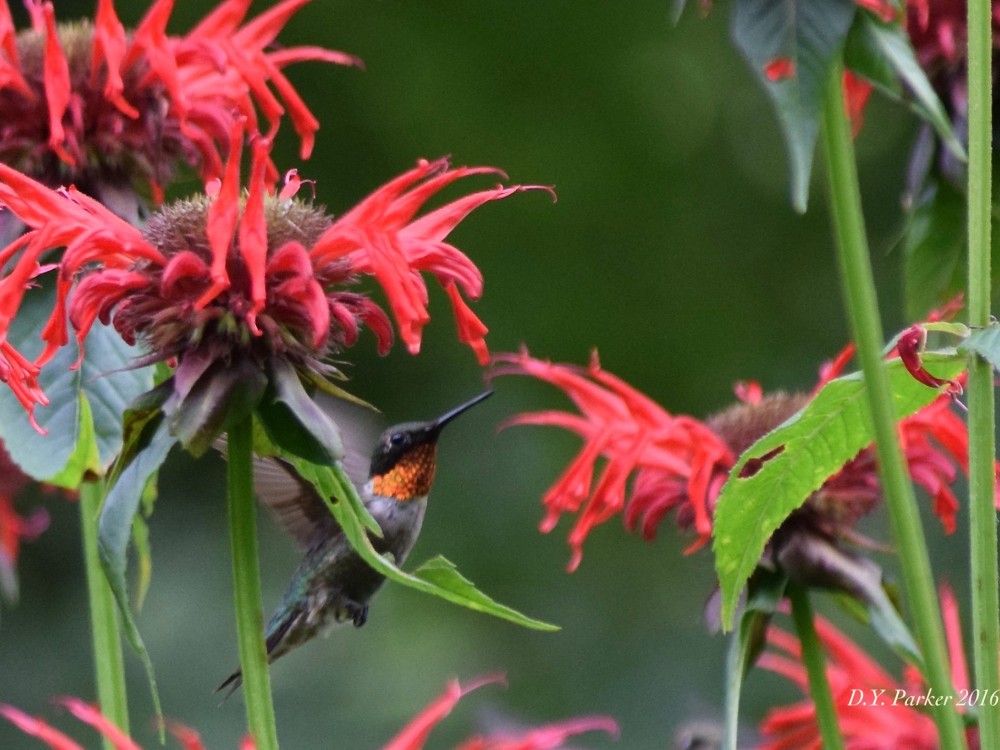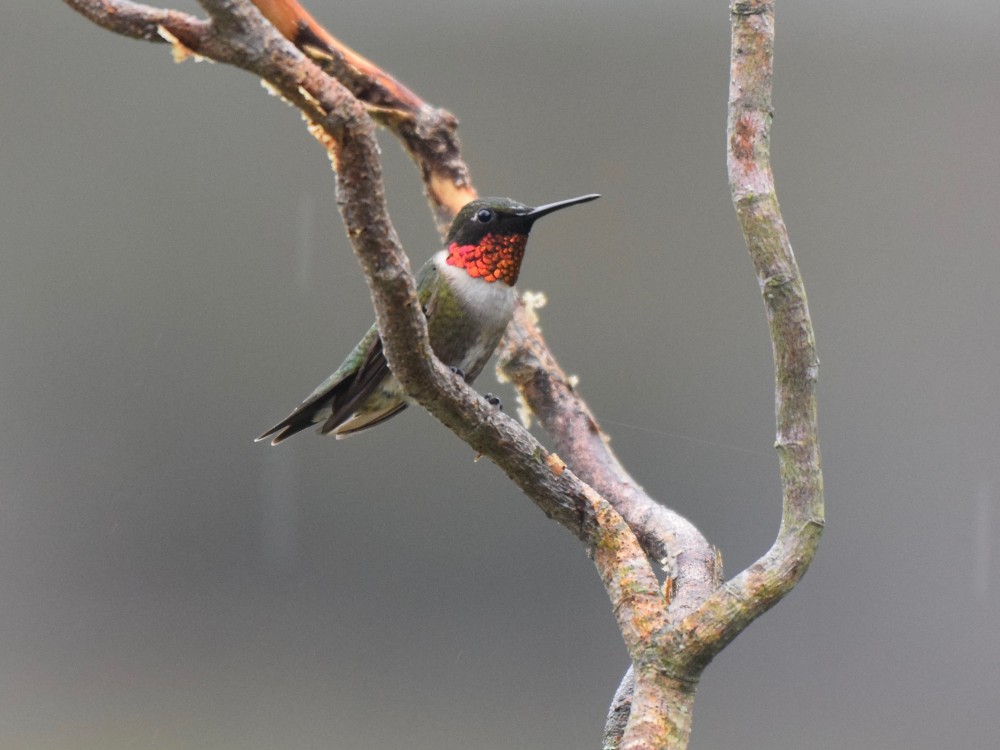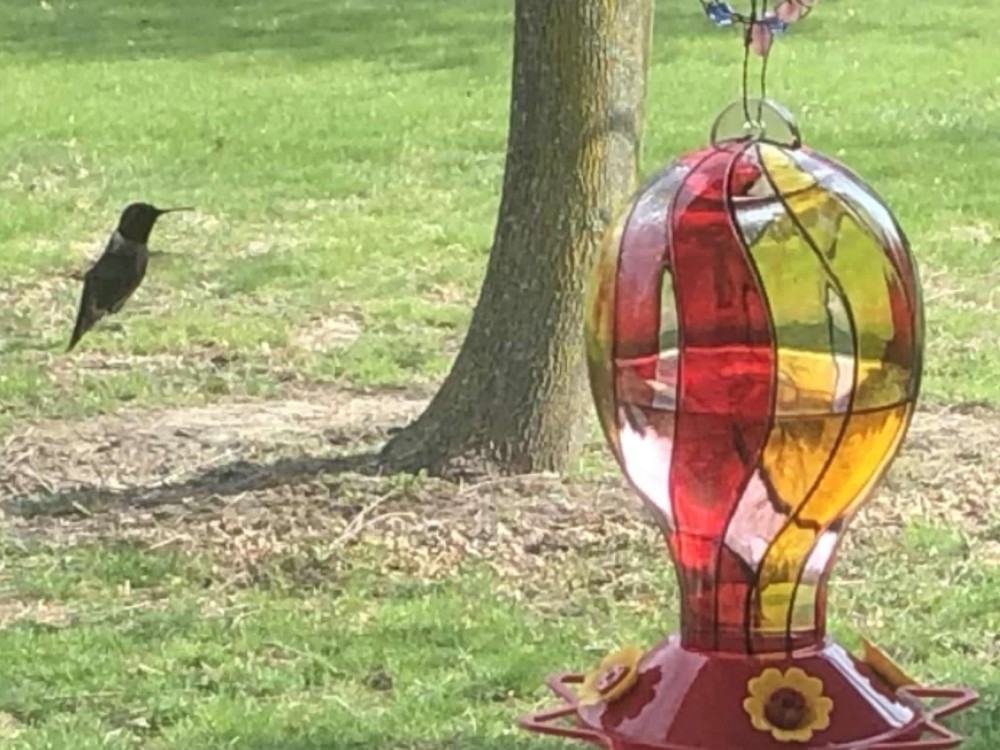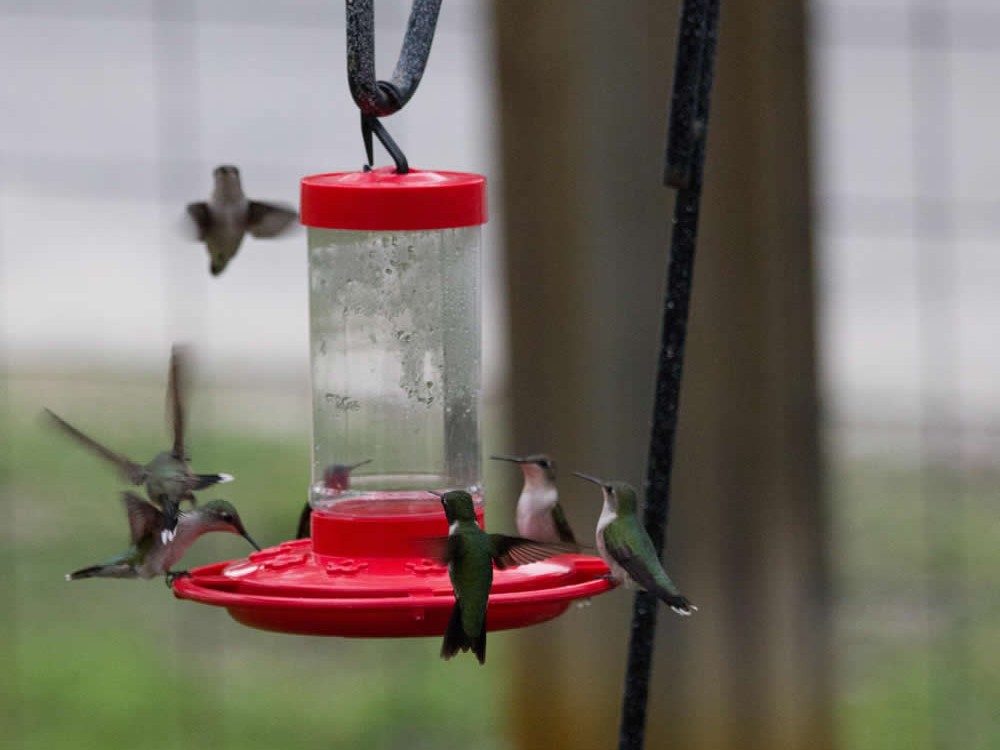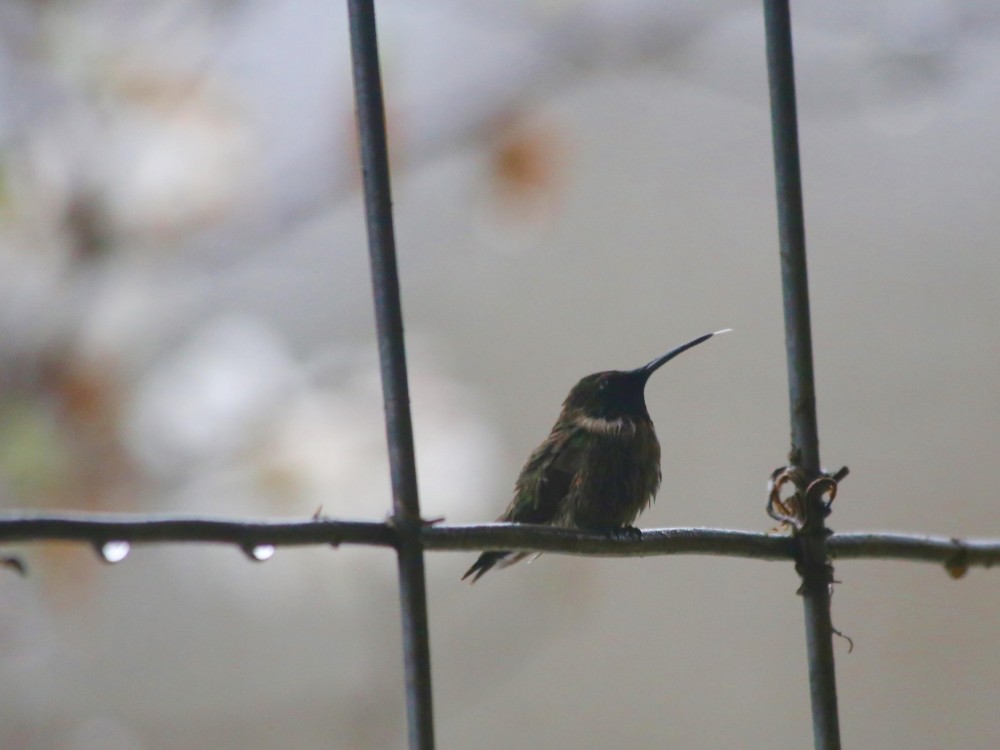About Hummingbirds
Migratory hummingbirds are a fascinating group of birds known for their small size, brilliant colors, and long-distance journeys. Several species of migratory hummingbirds breed in North America and undertake remarkable migrations between their breeding and wintering grounds. Each species has unique characteristics and behaviors that make them an integral part of ecosystems throughout their range.
The Migration Study
Migration typically occurs twice a year, in spring and fall. During these periods, hummingbirds travel between their breeding grounds, where they nest and raise their young, and their wintering grounds, where they spend the non-breeding season. Migratory hummingbirds follow specific routes dictated by geographical features, food availability, and habitat suitability. Some species migrate along coastal routes, while others follow mountain ranges or cross vast expanses of open water. Migratory hummingbirds follow nectar blooms and insect populations along their migration routes. Migratory hummingbirds have evolved special physiological and behavioral adaptations for migration, such as increased fat storage for energy, efficient foraging techniques, and navigational skills. Migration distances vary among species. Some migratory hummingbirds travel thousands of miles between their breeding and wintering grounds. The primary purpose of migration is to ensure access to abundant food resources and suitable breeding habitats. Migration poses several challenges for hummingbirds, including finding suitable stopover sites for rest and refueling, navigating across long distances, and avoiding adverse weather conditions. Understanding the intricacies of migration in migratory hummingbirds is essential for conservation efforts and for appreciating the incredible journeys these tiny birds undertake each year.
Ruby-throated
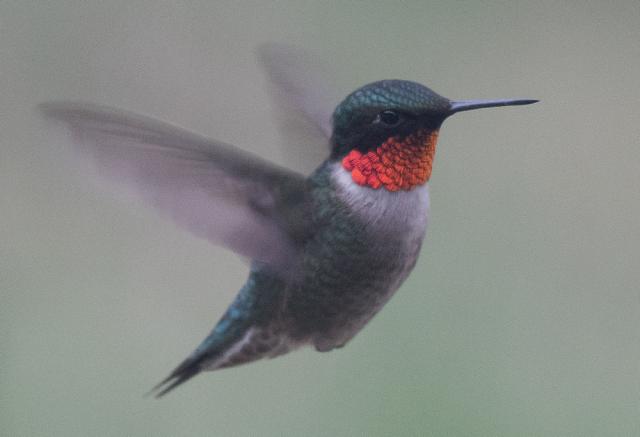
Rufous
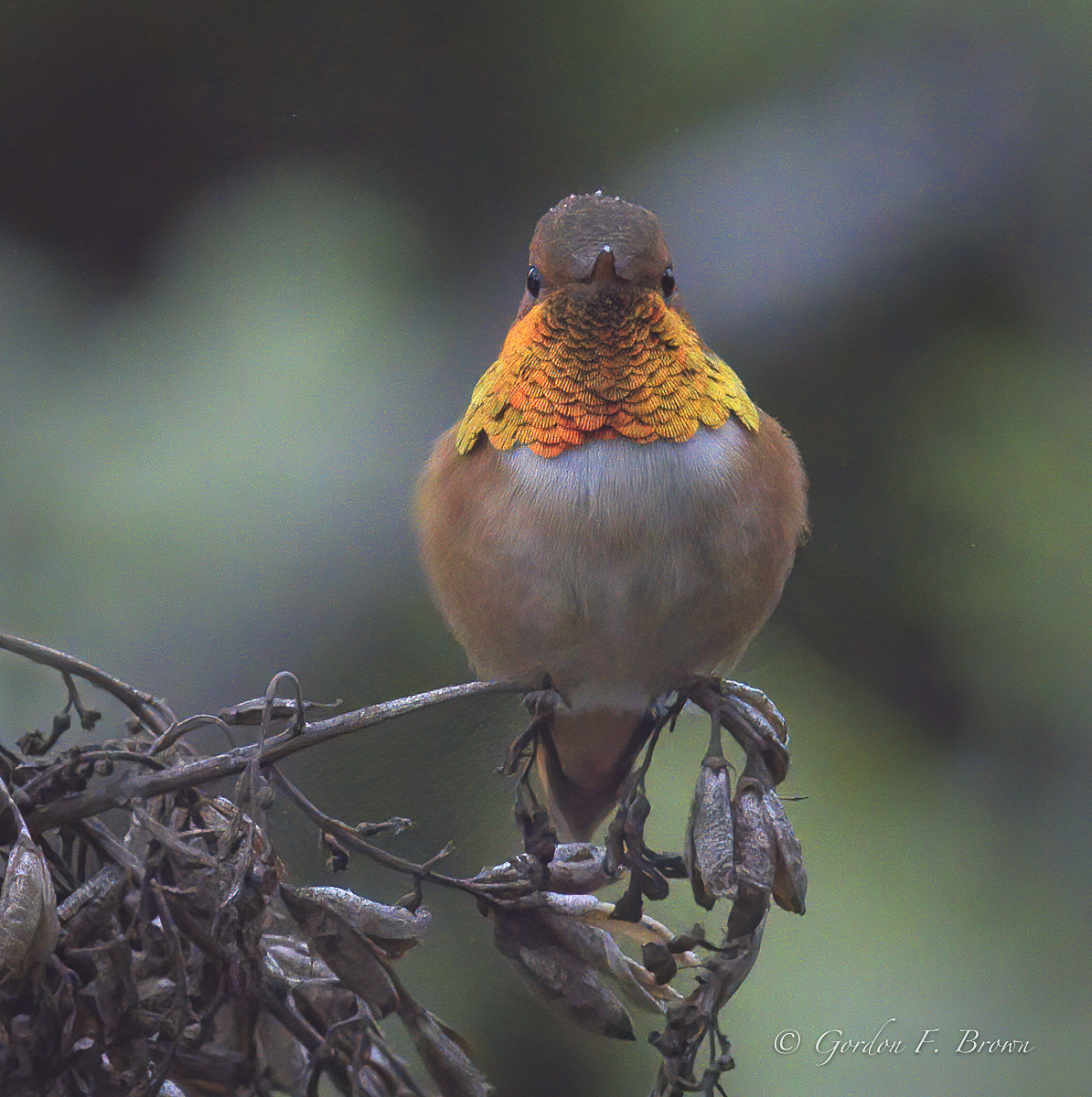
Broad-tailed
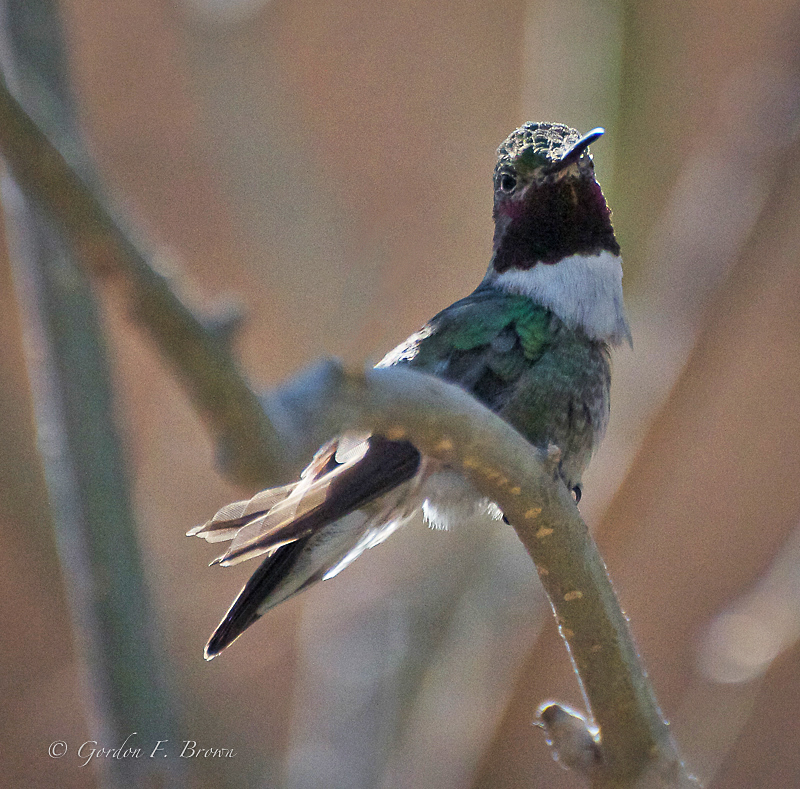
Black-chinned
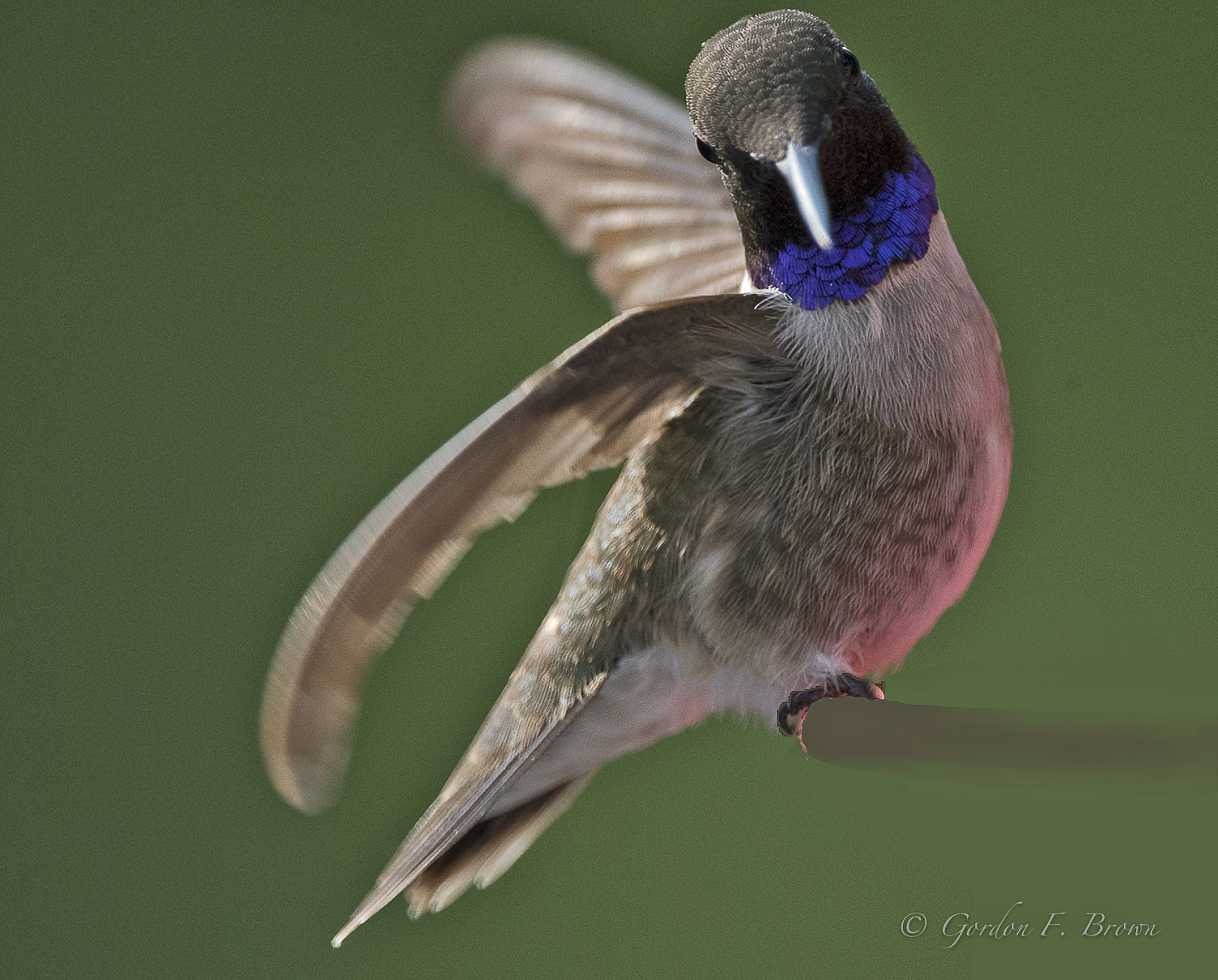
Anna's
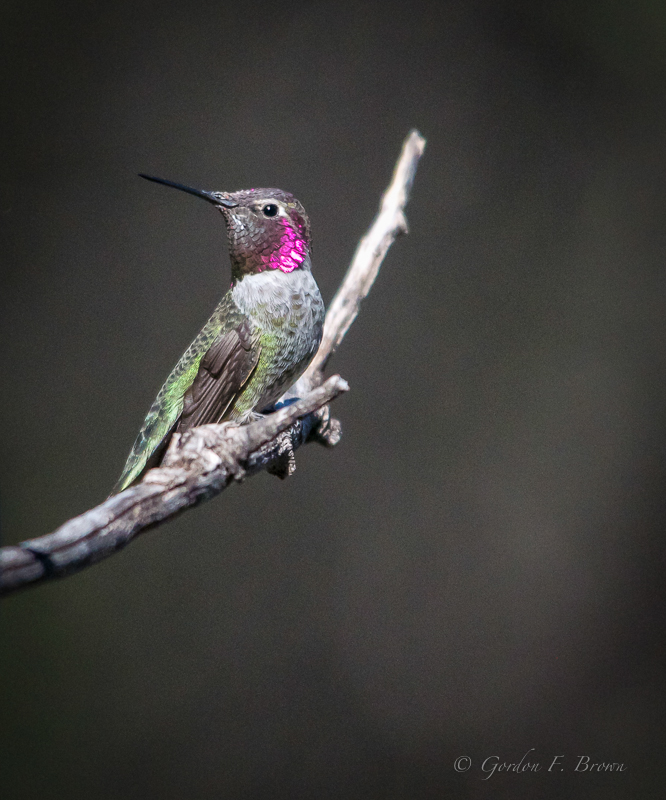
Allen's
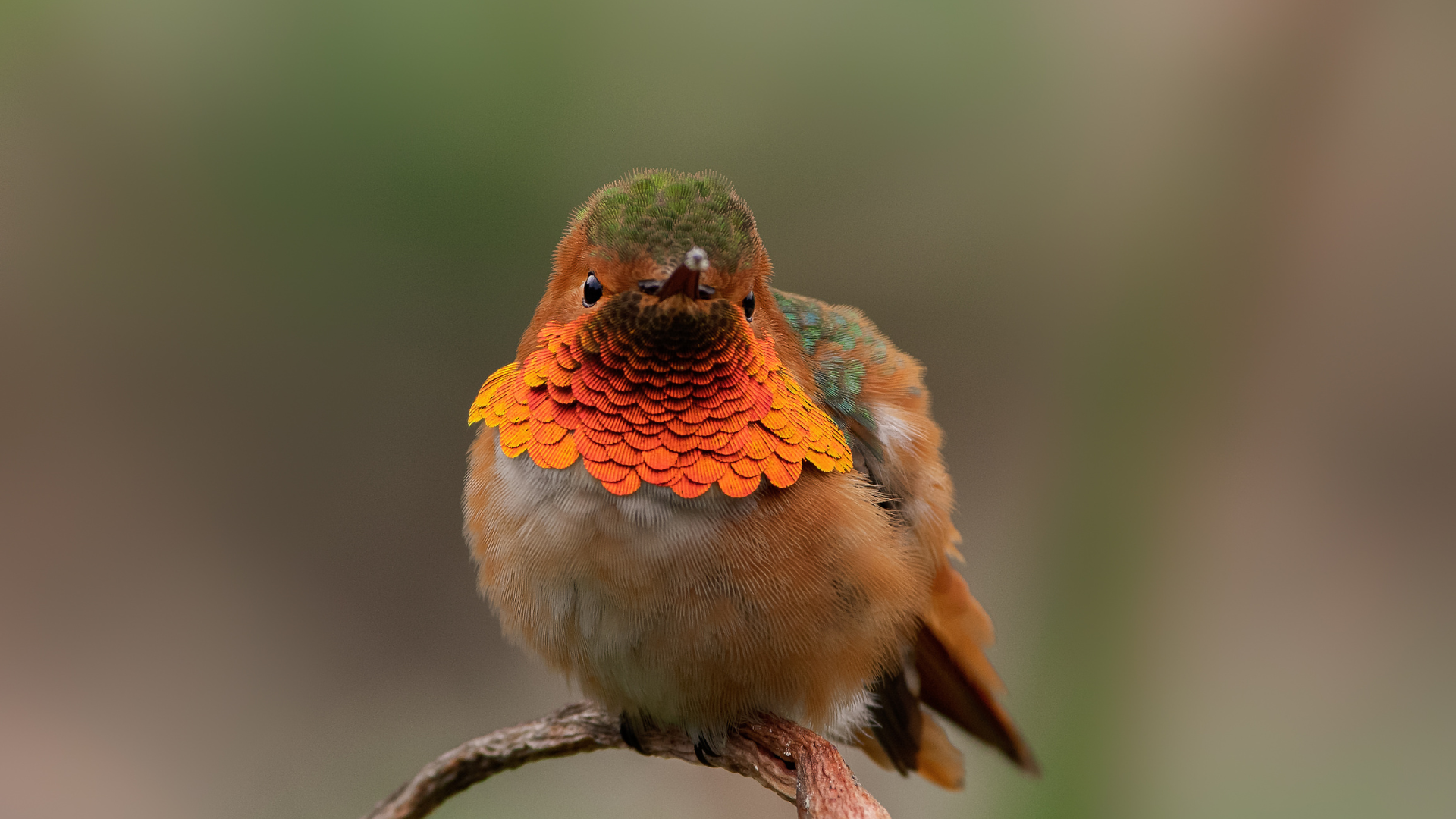
Costa's
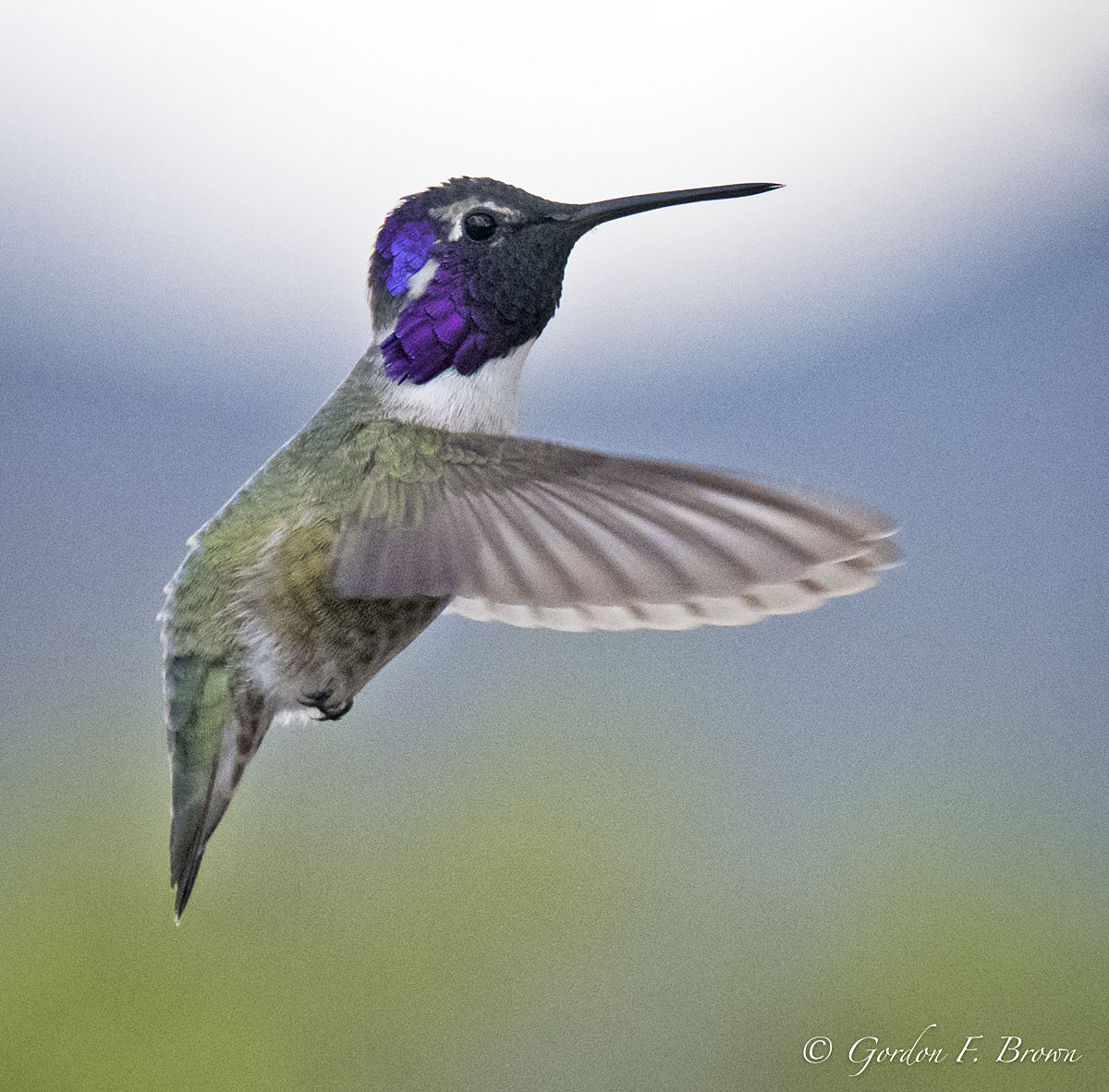
Calliope
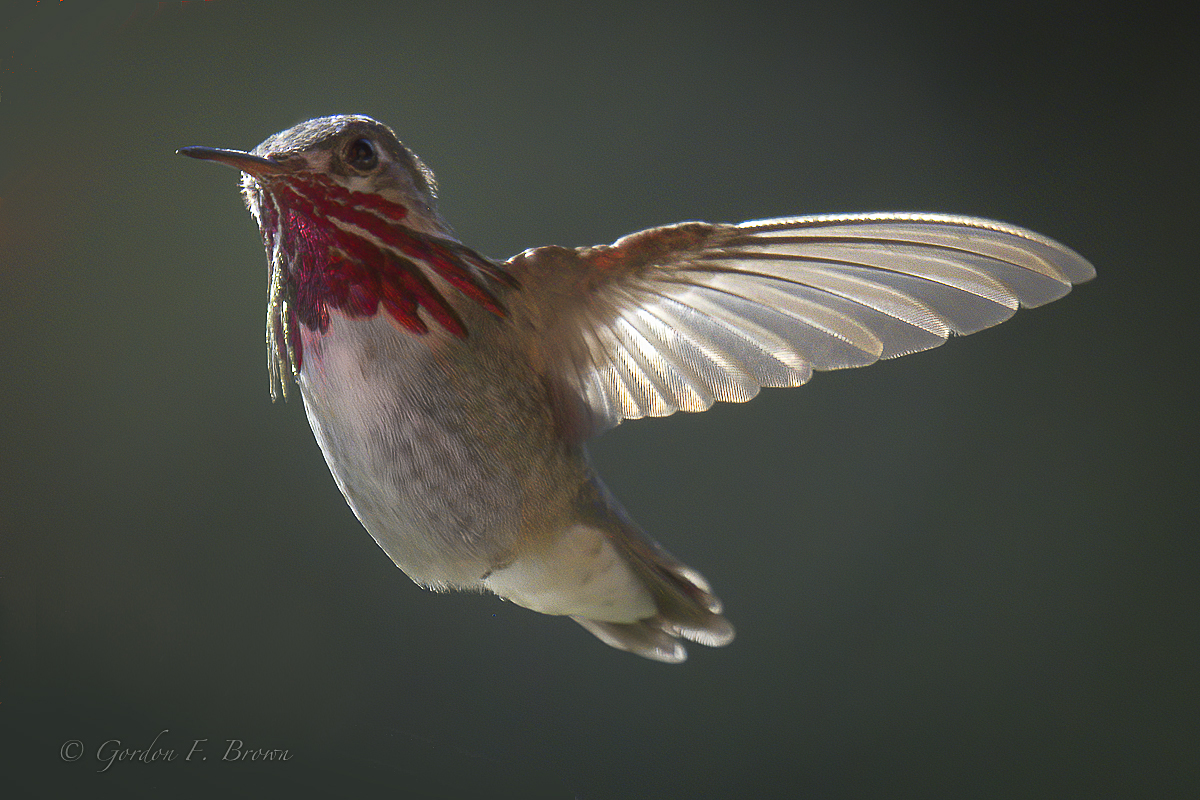
About Ruby-throated
Hummingbirds
Ruby-throated Hummingbirds (Archilochus colubris) are long-distance migrants. They breed in North America, ranging from the Gulf Coast to southern Canada. In the fall, they migrate to Central America, primarily Mexico and other countries in Central America like Panama and Costa Rica. Their migration is remarkable because some individuals cross the Gulf of Mexico in a single flight, covering distances of up to 500 miles.
Male Ruby-throated Hummingbird
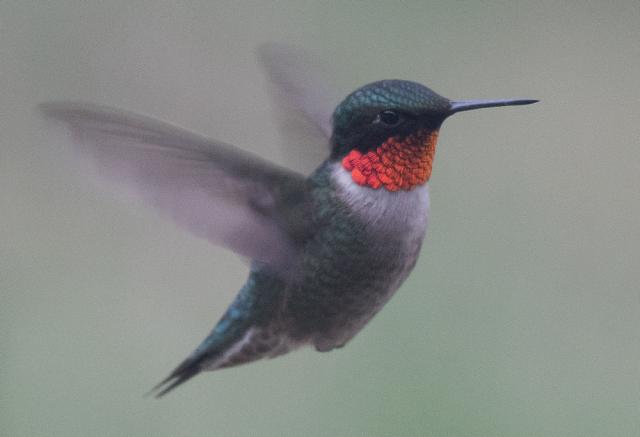
Female Ruby-throated Hummingbird
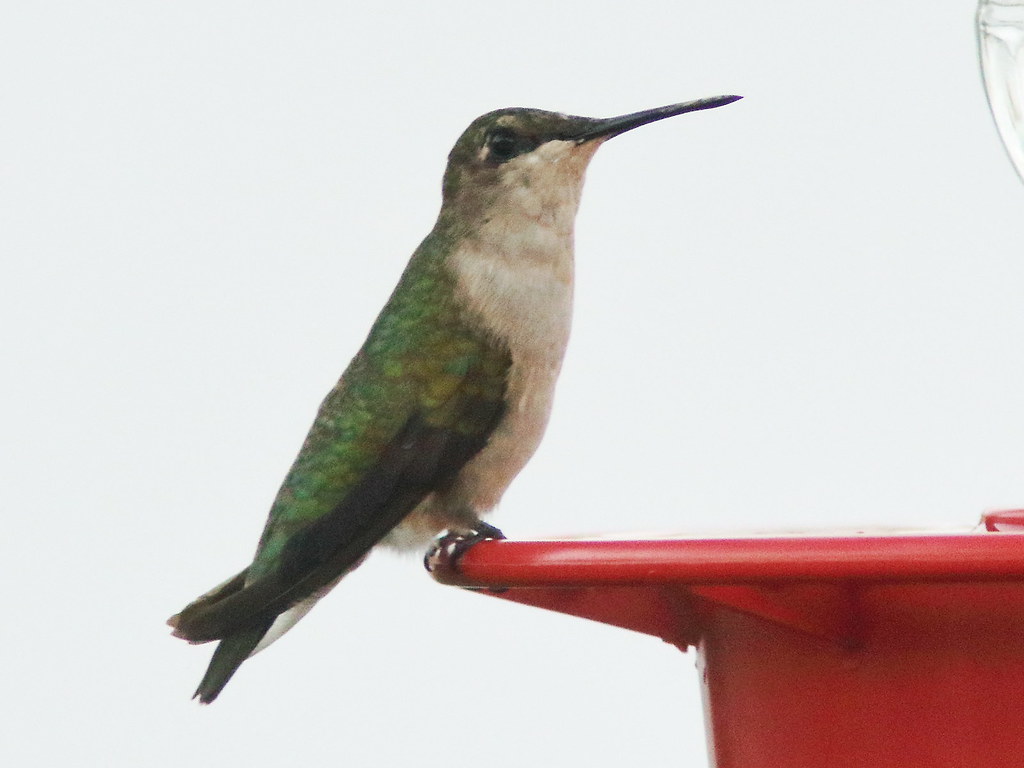
Identification Tips
<< silhouette image here >>
- Male/Female
Male: Males have a distinctive iridescent ruby-red throat, which can appear dark under low light.
Female: Females lack the red throat and instead have a plain white or slightly streaked throat.
- Tail, Beak, Talons/Feet
The tail is slightly forked with green and black coloration in males, and white-tipped outer tail feathers in females. This hummingbird’s beak is long, straight, and slender, perfect for accessing nectar deep within flowers. Feet are small, not used for perching for long periods but rather clinging shortly to flowers and feeders.
- Coloration
Males: Brilliant green back, white underparts, and a striking red throat.
Females: Green back, white underparts, and a grayish-white throat.
- Wings
Long, narrow, and pointed, their wings beat rapidly, allowing for agile flight and hovering capabilities.
- Size and Shape
Small and delicate, about 3.5 inches long, with a wingspan of around 4.3 inches.
- Habitat
During breeding, they are found in deciduous and mixed woodlands, orchards, and gardens. In winter, they inhabit tropical forests and scrublands.
- Behavior
Ruby-throated Hummingbirds are highly territorial, especially males, who aggressively defend feeding areas. They are also known for their incredible agility in flight.
- Nesting Sites and Fledglings
Nests are typically built on slender, often downward-sloping branches, 10-20 feet above the ground. Females build the nests using plant down, spider silk, and lichen. Fledglings leave the nest about three weeks after hatching.
- Longevity
The average lifespan is about 3-5 years, though some individuals have been known to live up to 9 years.
- Interspecies Interactions
Ruby-throated Hummingbirds play a crucial role in pollination for many flowering plants. They also interact with insects, both as prey and as part of a shared ecosystem.
The Migration Study
Studying Ruby-throated Hummingbirds is crucial for several reasons. They are indicators of ecosystem health, pollinators for various plant species, and their migratory patterns can provide insights into climate change effects. Additionally, understanding their migration can help in conserving critical habitats along their routes.
Journey North volunteers
- Report on the timing of arrival at their breeding grounds in the spring and departure during the fall migration
- Monitor the timing and routes of spring and fall migration
- Track the establishment and maintenance of breeding territories
- Report on the foraging activities and shifts in diet throughout the year
With this volunteer-contributed data, researchers gain insights into the timing of annual life cycle events, location of migration routes, critical stopover locations, and natural resources requirements needed to sustain the migration.
- Spring Migration
Spring migration begins as early as February, with birds arriving in the southern United States by March and reaching northern breeding grounds by May.
- Breeding and Nesting
Breeding occurs from late May through July. Females are solely responsible for nest building, incubation, and feeding the young.
- Nesting Habits
During the breeding season, they prefer open woodlands, forest edges, and gardens with abundant flowers. In their wintering grounds, they favor tropical forests and shrubby areas.
- Fall Migration
Fall migration starts in August and peaks in September. By October, most have reached their wintering grounds in Central America.
Annual Cycle and Distribution
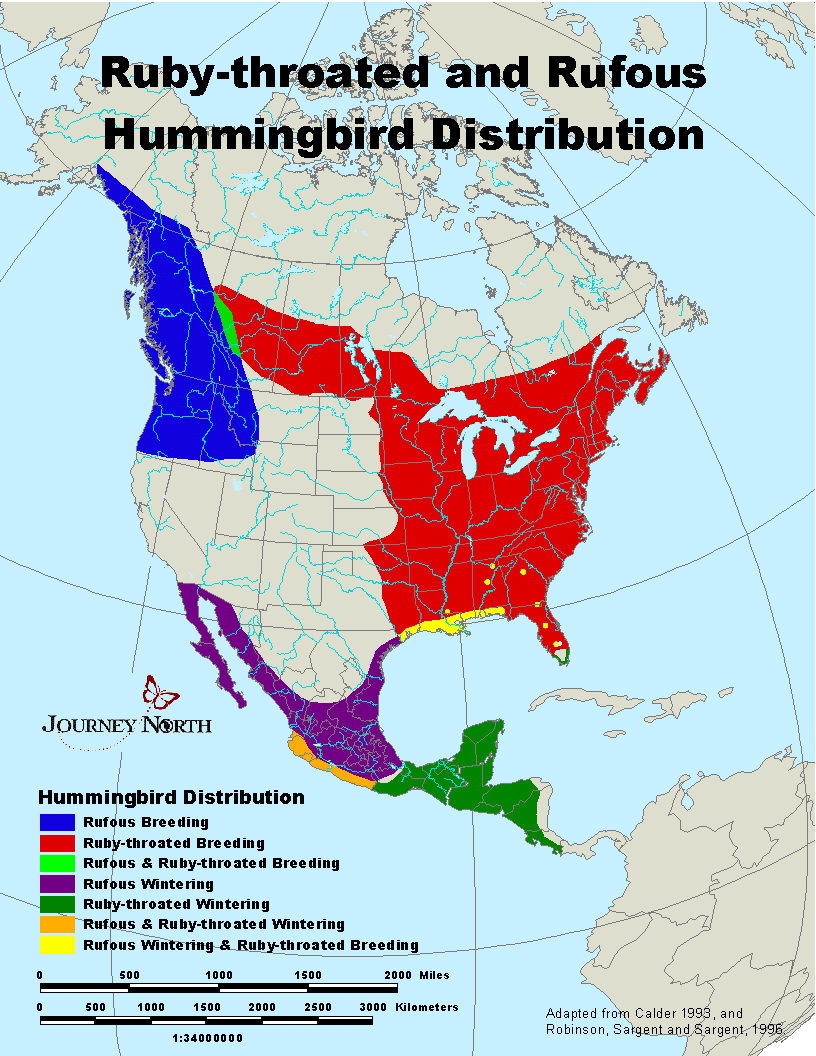
- January: Basking in the Tropics
During January, the vast majority of Ruby-throated Hummingbirds are on their wintering grounds in the Southern Hemisphere. They are getting fresh new feathers and molting, but they still need to visit hundreds of flowers every day. Hummingbirds burn energy so fast they often eat 1.5 to 3 times their body weight in food per day.
- February: Growing Restless
By February, Ruby-throats get a little restless in response to hormonal changes that are triggered by the changing length of daylight. The first birds start migrating north at the end of February.
- March: Heading North
In March, migration is underway. Hummingbirds can't afford to be in too much of a hurry when they return to their breeding range in spring. There has to be food all along the way due to their tiny size and high metabolism. Hummingbirds follow Yellow-bellied Sapsuckers north because those birds drill holes, called sapsucker wells, in trees each spring. These tiny birds cannot survive a day without food, so sap running from the holes is important for Ruby-throated Hummingbirds in early spring.
- April: Full Speed Ahead - Peak Migration
In April, hummingbirds begin to arrive along the Gulf Coast. Males arrive first and establish a territory rich in flowers. They show off with flight displays, diving, dipping, and looping to attract a female to their territory. If she likes his display, she will mate with him. Breeding begins in the southern states where flowers are in bloom. The first egg can be laid as early as the second week of April.
- May: Getting Down to Nesting
In May, hummingbirds are arriving in the northernmost parts of their vast breeding range. Females are building nests and laying eggs. Males are busy protecting the territory's food sources, chasing away competitors. He makes sure there will be enough food for his growing family.
- June: Raising Babies
In June, a female hummingbird is busy in the nest. She does it all: lays eggs, incubates them, and broods the babies. The chicks grow inside the egg for 12-14 days before hatching. They are born naked and have their eyes closed until about 9 days of age. At 16 days, they are 8 times bigger than when they were born. Finally, they fly out of the nest at 21 or 22 days of age. A female may raise two or even three broods in a summer.
- July: A Busy Time
July is busy on the breeding grounds. Females are feeding their growing babies. Until they fledge, they are completely dependent on their mothers for all their food. Later in July, the young have fledged and will follow their mothers to nearby feeders. Meanwhile, males are putting on fat. Fewer hours of sunlight trigger the urge to migrate as fall approaches. Some males leave as early as mid-July. By leaving first, males are ensuring more insects and nectar available for the babies.
- August
August brings the biggest push south, and hummingbirds are gathering in huge numbers along the Gulf of Mexico. Males arrive there first, followed by females and juveniles. Despite this being their first migration, juveniles do not migrate with a parent. By late August, you may only see females and juveniles at your feeders.
- September: Action Everywhere
In September, adults are still arriving at the Gulf Coast. Breeding activity may still be happening in Southern Ontario, where eggs may be laid until the first week of September. By mid-September, the hummingbirds you are seeing are likely migrants on the move, not your familiar summer residents. Keep your feeders up at least two weeks after you've seen your last hummingbird. Stragglers or young juveniles may need more time to grow before leaving.
- October: Settling in the Tropics
In October, Ruby-throats are on their wintering grounds. The birds that traveled by land crossed 4 countries to get there — Mexico, Guatemala, Honduras, and Nicaragua. All of the arrivals from the north now face more competition for food. The birds are molting and getting fresh new feathers. The juveniles are getting to know about life in the tropics. They must adjust to new dangers.
- November: Changing the Feathers
In November on the wintering grounds, all Ruby-throated Hummingbirds are replacing their flight and body feathers, including wing feathers. They will need fresh ones before migrating north. Feathers are a bird's most important flight gear. The birds stop to preen several times a day. Preening helps keep the feathers clean and aligned, making the bird's wings more efficient and body aerodynamic.
- December: Focusing on Food
Hummingbirds on the lush, tropical wintering grounds are focused on feeding and completing their molt. Growing new feathers uses lots of calories, and the tiny hummers need to bulk up again. Meanwhile, outliers are hummingbirds that decided to stay along the Gulf Coast each winter instead of continuing to Central America, and there are always a few hummers that stay up north. Another small population winters in the Outer Banks of North Carolina.
About Rufous
Hummingbirds
Rufous Hummingbirds (Selasphorus rufus) are known for one of the longest migrations relative to their body size. They breed in the Pacific Northwest, from southern Alaska to northern California, and migrate to wintering grounds in Mexico. Their migration route often includes a circular path: north along the Pacific Coast in the spring and south through the Rocky Mountains in the fall. This species is known for its resilience and ability to adapt to various environments along its migratory path.
Male Rufous Hummingbird
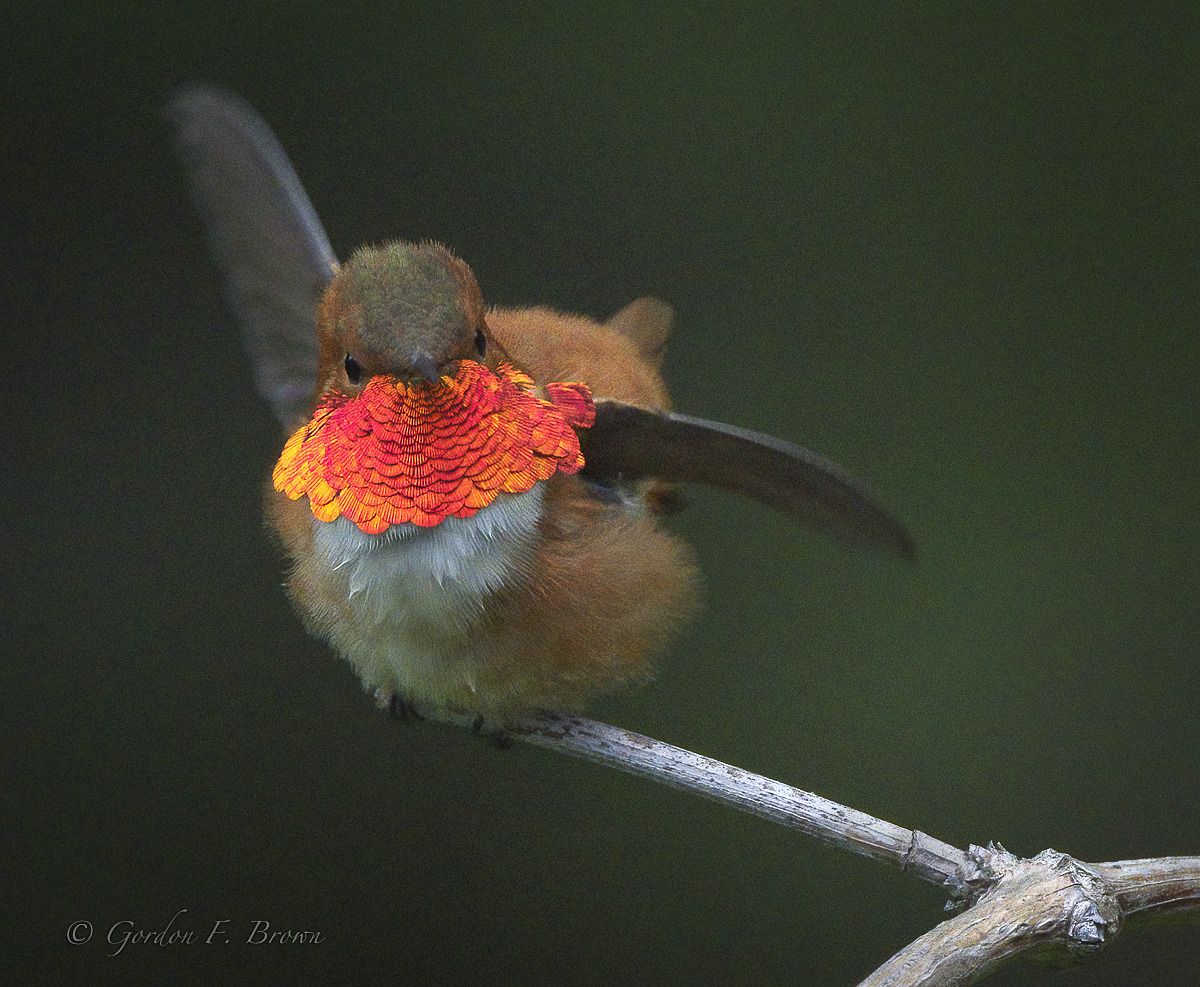
Female Rufous Hummingbird
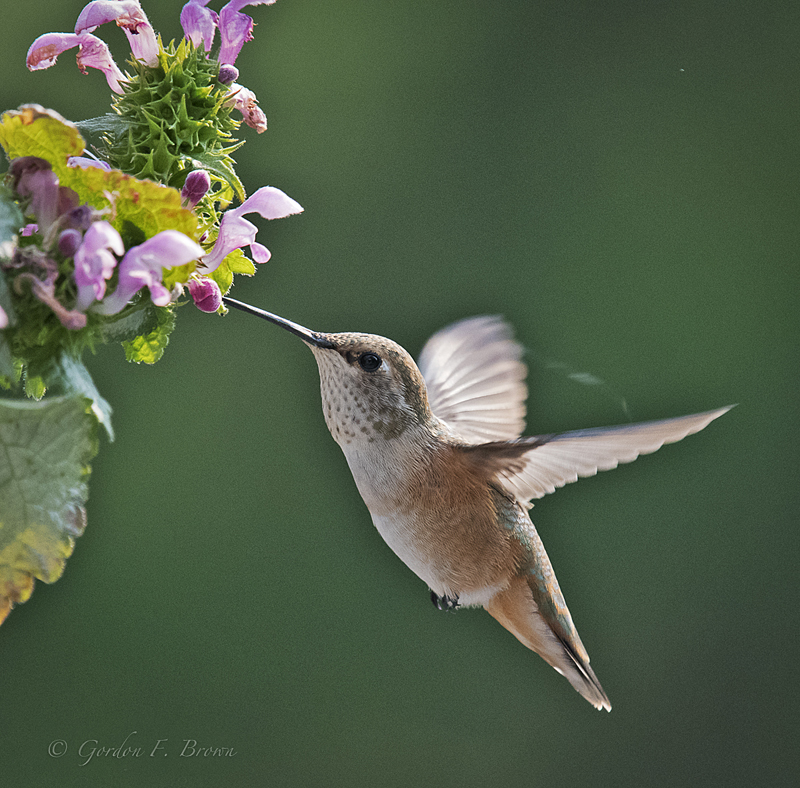
Identification Tips
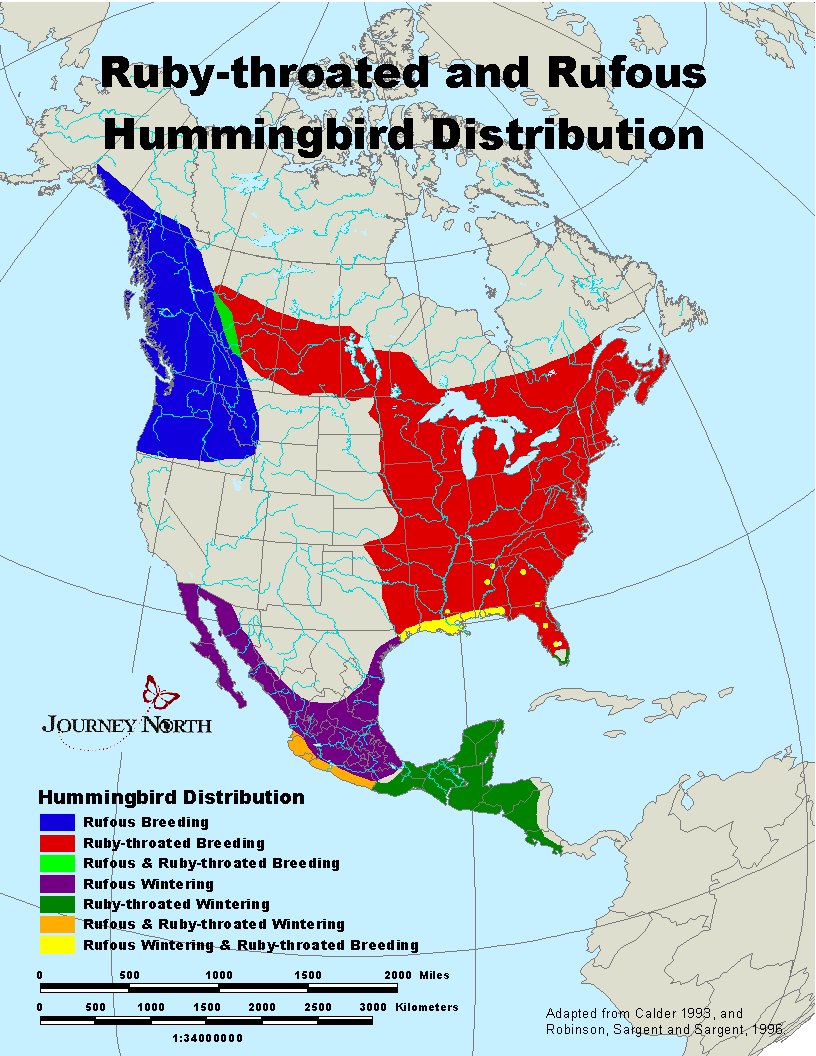
- Male/Female
Male: Males have a bright, iridescent orange-red throat patch (gorget), a rusty orange back, and a white chest.
Female: Females are greenish above with some rusty coloration on the sides and flanks. They have a spotty or streaked throat, often with some iridescent feathers.
- Tail, Beak, Talons/Feet
Both sexes have rufous tails with a green central band in females. The tail is notched and displays white tips in females. The beak is long, straight, and slender, perfect for reaching into flowers for nectar. The feet are small, adapted for clinging to feeders and flowers rather than perching.
- Coloration
Males: Bright orange-red gorget, rusty orange on the back, and white underparts.
Females: Green back, white underparts with rufous flanks, and a speckled throat.
- Wings
Long, narrow, and powerful, allowing for agile flight and hovering. Their wings produce a characteristic whirring sound during flight.
- Size and Shape
Small and compact, about 3.5 inches long with a wingspan of roughly 4.3 inches, similar in size to the Ruby-throated Hummingbird.
- Habitat
Rufous Hummingbirds breed in open or shrubby areas, forest edges, and mountain meadows. During migration, they can be found in a variety of habitats, including gardens and urban areas.
- Behavior
Highly territorial and aggressive, especially during the breeding season. Males perform elaborate aerial displays to attract females and deter rivals.
- Nesting Sites and Fledglings
Females build nests on tree branches, often in conifers, using plant down, spider silk, and lichens. Nests are typically located 5-30 feet above the ground. The female lays two eggs, and the fledglings leave the nest about 3 weeks after hatching.
- Longevity
The average lifespan is about 3-5 years, though some individuals can live up to 8 years.
- Interspecies Interactions
Rufous Hummingbirds are important pollinators for many plants. They also have mutualistic relationships with insects like spiders, whose webs they use for nest construction.
The Migration Story
Studying Rufous Hummingbirds is vital due to their extensive migratory range and the varied ecosystems they encounter. They serve as important pollinators in many regions and can be indicators of environmental changes, particularly those related to climate change and habitat loss. Their long migration also provides insights into avian navigation and the physiological demands of long-distance travel.
Journey North volunteers
- Report on the timing of arrival at their breeding grounds in the spring and departure during the fall migration
- Monitor the timing and routes of spring and fall migration
- Track the establishment and maintenance of breeding territories
- Report on the foraging activities and shifts in diet throughout the year
With this volunteer-contributed data, researchers gain insights into the timing of annual life cycle events, location of migration routes, critical stopover locations, and natural resources requirements needed to sustain the migration.
- Spring Migration
Spring migration begins in February, with Rufous Hummingbirds moving north along the Pacific Coast. They arrive at their breeding grounds from late March to early May.
- Breeding and Nesting
Breeding occurs from May through July. Males establish and defend territories rich in flowers. Females are responsible for nest building, incubation, and caring for the young.
- Nesting Habits
During the breeding season, they prefer open woodlands, forest edges, mountain meadows, and gardens. During migration, they are often found in diverse habitats, including urban areas with feeders.
- Fall Migration
Fall migration starts in July, with Rufous Hummingbirds moving south through the Rocky Mountains and reaching their wintering grounds in Mexico by October.
Annual Cycle and Distribution
<< Migration map coming soon >>
- January
Wintering in Mexico, focusing on feeding and molting.
- February
Migration north begins; early arrivals reach the southern U.S.
- March
Continued migration north along the Pacific Coast; arrival at breeding grounds in southern parts of the range.
- April
Peak migration; arrival at northern breeding grounds; males establish territories.
- May
Breeding season starts; nest building and egg laying.
- June
Females incubate and brood young; males defend territories.
- July
Nesting continues; early migration south begins for some males.
- August
Southward migration in full swing; birds gather along the Rocky Mountains.
- September
Migration continues; arrival at wintering grounds in Mexico.
- October
Settling into wintering grounds; increased competition for food.
- November
Molting and replacing feathers in preparation for the next migration.
- December
Focusing on feeding and completing molt; some populations winter in southern U.S. and Mexico.
About Broad-tailed
Hummingbirds
Broad-tailed Hummingbirds (Selasphorus platycercus) are migratory birds that breed in the mountainous regions of the western United States and Mexico, primarily from the Rocky Mountains to the Sierra Nevada. They migrate south to winter in Mexico and Central America. Their migration typically follows altitudinal changes, moving to higher elevations in the breeding season and lower elevations in the winter.
Male Broad-tailed Hummingbird
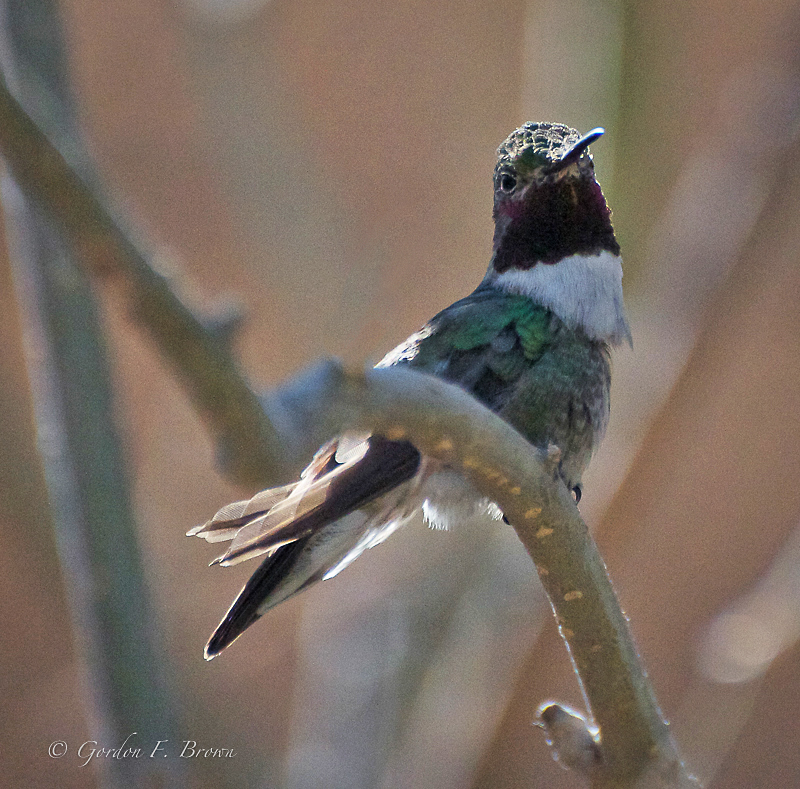
Female Broad-tailed Hummingbird
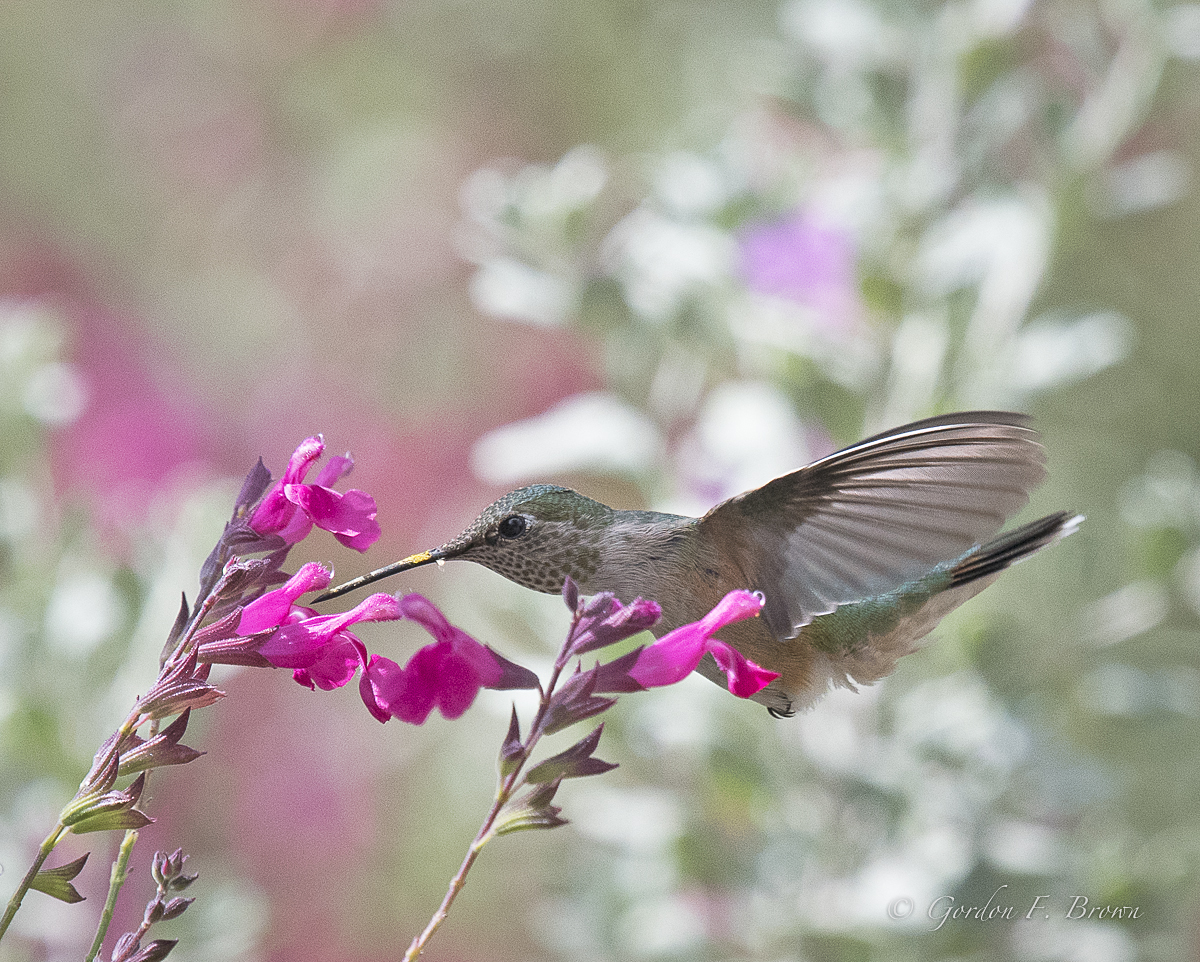
Identification Tips
<< silhouette image here >>
- Male/Female
Male: Males have a distinctive iridescent rose-pink throat (gorget), a green back, and white underparts.
Female: Females are green above and white below, with some buffy or rusty flanks and a speckled throat.
- Tail, Beak, Talons
The tail is broad, rounded tail with green central feathers and rufous edges in both sexes; males have more pointed tail feathers. The beak is long, straight, and slender, suitable for accessing deep flower nectaries. And the talons are small and adapted for clinging to feeders and flowers.
- Coloration
Males: Iridescent rose-pink gorget, green back, and white underparts.
Females: Green back, white underparts with buffy flanks, and a speckled throat.
- Wings
Long and narrow, enabling fast and agile flight. The wings make a characteristic trilling sound during flight, especially in males.
- Size and Shape
Similar in size to other small hummingbirds, about 4 inches long with a wingspan of around 5 inches.
- Habitat
During the breeding season, they inhabit open woodlands, meadows, and mountain forests. In winter, they are found in lowland forests and shrublands in Mexico and Central America.
- Behavior
Broad-tailed Hummingbirds are territorial, especially males during the breeding season. They are known for their aerial displays and aggressive defense of feeding areas.
- Nesting Sites and Fledglings
Nests are built by females on tree branches, often in conifers, using plant down, spider silk, and lichens. Nests are usually placed 5-20 feet above the ground. Females lay two eggs, and fledglings leave the nest about 3 weeks after hatching.
- Longevity
The average lifespan is about 3-5 years, though some individuals may live up to 7 years.
- Interspecies Interactions
Broad-tailed Hummingbirds play a crucial role as pollinators in their high-altitude habitats. They also interact with insects like spiders for nest-building materials.
The Migration Study
Studying Broad-tailed Hummingbirds is important for understanding the effects of climate change on migratory patterns, as their high-altitude habitats are particularly sensitive to temperature changes. They are also key pollinators in mountainous ecosystems and can serve as indicators of environmental health.
Journey North volunteers
- Report on the timing of arrival at their breeding grounds in the spring and departure during the fall migration
- Monitor the timing and routes of spring and fall migration
- Track the establishment and maintenance of breeding territories
- Report on the foraging activities and shifts in diet throughout the year
With this volunteer-contributed data, researchers gain insights into the timing of annual life cycle events, location of migration routes, critical stopover locations, and natural resources requirements needed to sustain the migration.
- Spring Migration
Spring migration begins in late March, with Broad-tailed Hummingbirds moving north to their breeding grounds. They often follow mountain ranges to reach higher elevations as the weather warms.
- Breeding and Nesting
Breeding occurs from late May through July. Males establish and defend territories, performing aerial displays to attract females. Females are responsible for nest building, incubation, and feeding the young.
- Preferred Habitats
During the breeding season, they prefer open woodlands, meadows, and mountain forests. During migration and winter, they can be found in a variety of habitats, including lowland forests and shrublands.
- Fall Migration
Fall migration starts in August, with Broad-tailed Hummingbirds moving south to their wintering grounds in Mexico and Central America. They often follow altitudinal gradients, moving to lower elevations as temperatures drop.
Annual Cycle and Distribution
<< Migration map coming soon >>
- January
Wintering in Mexico and Central America, focusing on feeding and molting.
- February
Preparation for spring migration; some early migrants begin moving north.
- March
Migration north begins in earnest, following mountain ranges to breeding grounds.
- April
Arrival at breeding grounds in southern parts of the range; males establish territories.
- May
Breeding season starts; nest building and egg laying.
- June
Females incubate and brood young; males defend territories.
- July
Nesting continues; late breeders still raising young.
- August
Early migration south begins; birds start moving to lower elevations.
- September
Peak fall migration; most birds are on the move to wintering grounds.
- October
Settling into wintering grounds in Mexico and Central America.
- November
Molting and replacing feathers in preparation for the next migration.
- December
Focusing on feeding and completing molt; some populations winter at lower elevations in the breeding range.
About Black-chinned
Hummingbirds
Black-chinned Hummingbirds (Archilochus alexandri) breed in the western United States and northern Mexico, favoring arid and semi-arid habitats such as deserts, canyons, and scrublands. They migrate to central Mexico for the winter. Their migration is usually longitudinal, moving north and south rather than along altitudinal gradients like some other hummingbird species.
Male Black-chinned Hummingbird
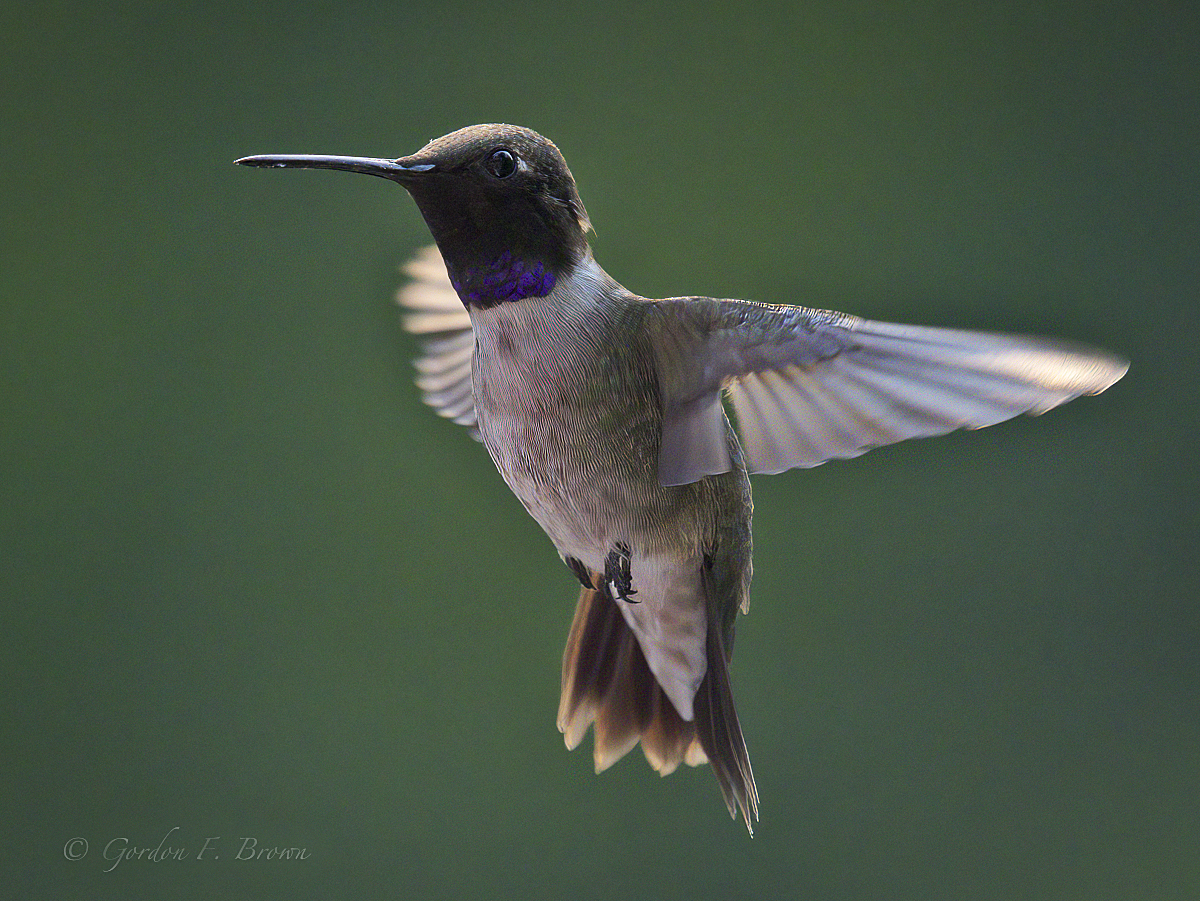
Female Black-chinned Hummingbird
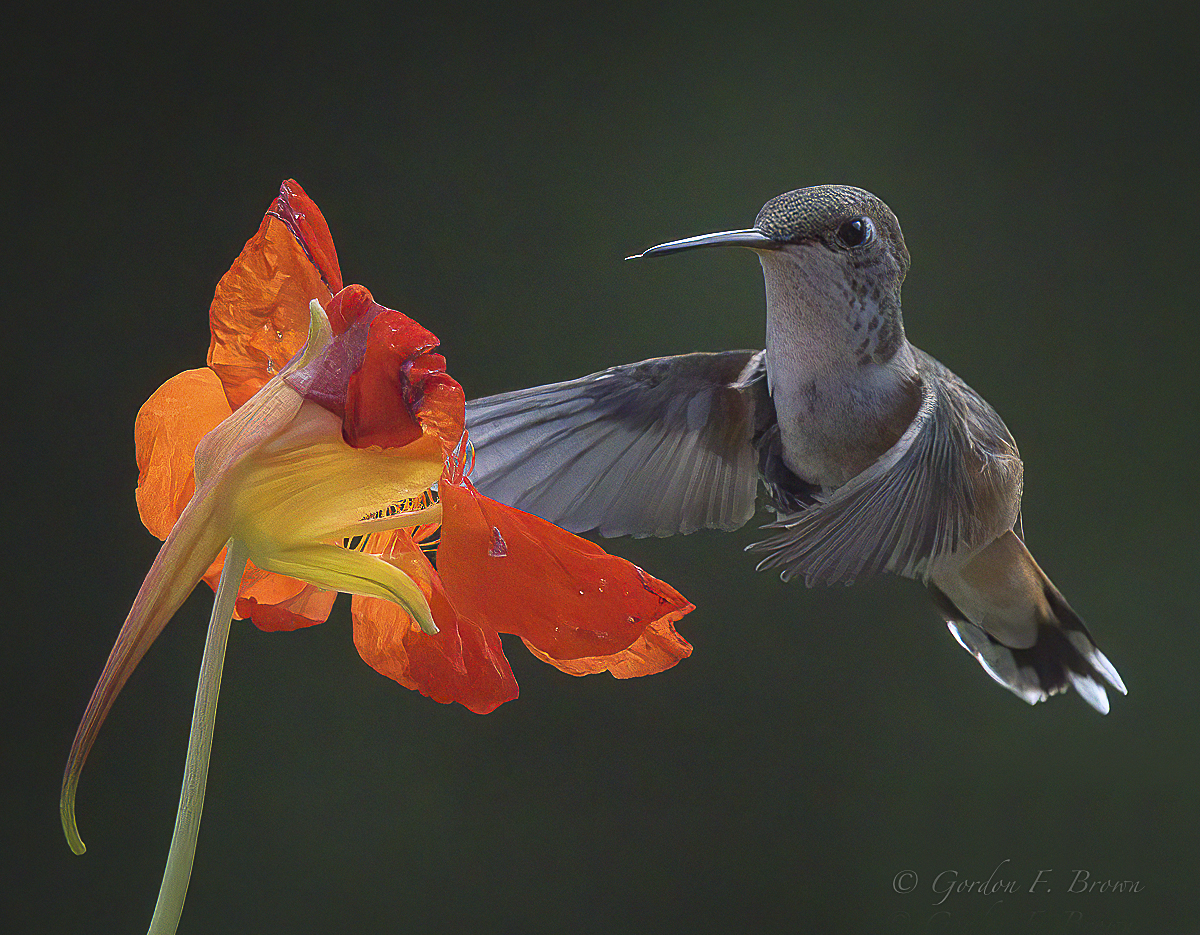
Identification Tips
<< silhouette image here >>
- Male/Female
Male: Males have a distinctive black chin and throat with an iridescent violet band below the black. Their upperparts are metallic green, and they have a white collar.
Female: Females are green above and white below with a plain throat. They lack the black and violet throat markings seen in males.
- Tail, Beak, Talons/Feet
Males have a slightly forked tail, while females have a more rounded tail with white tips. Beaks are long, straight, and slender, well-suited for accessing nectar in flowers. Feet are small and adapted for clinging to feeders and flowers.
- Coloration
Males: Black chin and throat with an iridescent violet band, metallic green upperparts, and white underparts.
Females: Green upperparts, white underparts, and a plain throat with no iridescence.
- Wings
Long and narrow, allowing for agile and rapid flight. They can hover with precision to feed on nectar.
- Size and Shape
Small and streamlined, about 3.5 inches long with a wingspan of around 4.5 inches.
- Habitat
Black-chinned Hummingbirds prefer arid and semi-arid habitats during the breeding season, such as deserts, canyons, and scrublands. During migration and winter, they are found in a variety of habitats, including gardens and urban areas.
- Behavior
Territorial, especially during the breeding season. Males perform diving displays to attract females and defend feeding territories. They are also known for their distinctive, buzzy flight sound.
- Nesting Sites and Fledglings
Females build nests in sheltered locations, often in trees or shrubs. The nests are made from plant down, spider silk, and lichens. They lay two eggs, and the fledglings leave the nest about 3 weeks after hatching.
- Longevity
The average lifespan is about 3-5 years, though some individuals may live longer, up to 10 years in some cases.
- Interspecies Interactions
Black-chinned Hummingbirds are important pollinators for many plants, particularly those adapted to arid environments. They also use spider webs in nest construction, highlighting a symbiotic relationship with spiders.
The Migration Story
Studying Black-chinned Hummingbirds is important because they are adaptable and thrive in various environments, making them good indicators of ecosystem health. They play a significant role as pollinators and their migration patterns can provide insights into the effects of climate change and habitat fragmentation.
Journey North volunteers
- Report on the timing of arrival at their breeding grounds in the spring and departure during the fall migration
- Monitor the timing and routes of spring and fall migration
- Track the establishment and maintenance of breeding territories
- Report on the foraging activities and shifts in diet throughout the year
With this volunteer-contributed data, researchers gain insights into the timing of annual life cycle events, location of migration routes, critical stopover locations, and natural resources requirements needed to sustain the migration.
- Spring Migration
Spring migration begins in March, with Black-chinned Hummingbirds moving north from their wintering grounds in Mexico to their breeding territories in the southwestern United States.
- Breeding and Nesting
Breeding occurs from late April through July. Males establish territories and perform courtship displays, while females build nests, incubate eggs, and care for the young.
- Preferred Habitats
During the breeding season, they prefer arid and semi-arid regions such as deserts, canyons, and scrublands. They are also found in riparian areas and urban gardens with suitable flowering plants.
- Fall Migration
Fall migration starts in late August, with Black-chinned Hummingbirds heading south to their wintering grounds in central Mexico. Migration continues through October.
Annual Cycle and Distribution
<< Migration map coming soon >>
- January: Wintering in Mexico
During January, Black-chinned Hummingbirds are typically found in their wintering grounds in central Mexico. They inhabit tropical and subtropical regions, often staying in areas with abundant flowering plants that provide necessary nectar.
- February: Preparing for Migration
In February, these hummingbirds continue to reside in central Mexico. As the month progresses, they start preparing for their northward migration. Hormonal changes triggered by increasing daylight may prompt some early individuals to begin moving north.
- March: Migration North Begins
By March, Black-chinned Hummingbirds start migrating north. They move from their wintering grounds in Mexico to breeding areas in the southwestern United States. Early migrants can be spotted in southern Texas and along the Gulf Coast.
- April: Arrival at Breeding Grounds
In April, migration is in full swing. Black-chinned Hummingbirds arrive at their breeding grounds in states like Texas, New Mexico, Arizona, and parts of California. Males establish territories and begin courtship displays to attract females.
- May: Breeding Season Starts
By May, breeding is underway. The birds are found throughout their breeding range, which includes arid and semi-arid habitats such as deserts, canyons, and scrublands. Nest building and egg laying commence, with females taking on the primary role of caring for the eggs.
- June: Raising Young
In June, females continue to incubate eggs and brood the young. The birds are actively feeding in their territories, which include areas with abundant flowering plants and insects. Males remain vigilant in defending their territories.
- July: Late Breeding and Fledging
July sees continued nesting activity. Late breeders are still raising young, while some early broods may have already fledged. The birds are found in the same breeding habitats, focusing on feeding their young and maintaining territories.
- August: Early Fall Migration
In August, the early stages of fall migration begin. Some Black-chinned Hummingbirds start moving south from their breeding grounds in the southwestern United States. They are often seen in transitional habitats along their migration route.
- September: Peak Migration South
September marks the peak of fall migration. The hummingbirds move through the southwestern United States and northern Mexico. They are often found in riparian areas and gardens with flowering plants that provide nectar for their journey.
- October: Settling in Wintering Grounds
By October, most Black-chinned Hummingbirds have reached their wintering grounds in central Mexico. They settle into tropical and subtropical environments with plentiful food sources. Some may also be found in southern parts of the United States if they haven’t completed their migration.
- November: Feeding and Molting
In November, Black-chinned Hummingbirds focus on feeding and molting. They replace their flight and body feathers to ensure they are in peak condition for the next migration cycle. They remain in central Mexico, taking advantage of the rich floral resources.
- December: Wintering in Central Mexico
During December, these hummingbirds continue to winter in central Mexico. They inhabit areas with abundant flowers and insects, focusing on feeding to maintain their energy levels through the winter. Some outliers may be found in the southernmost parts of the United States.
About Anna's
Hummingbirds
Anna's Hummingbirds (Calypte anna) are unique among hummingbirds in North America because many populations are relatively sedentary. They are found year-round along the Pacific Coast, from southern Alaska to Baja California, Mexico. Some individuals do migrate locally, moving to higher elevations during the summer and returning to lower elevations in the winter.
Male Anna's Hummingbird
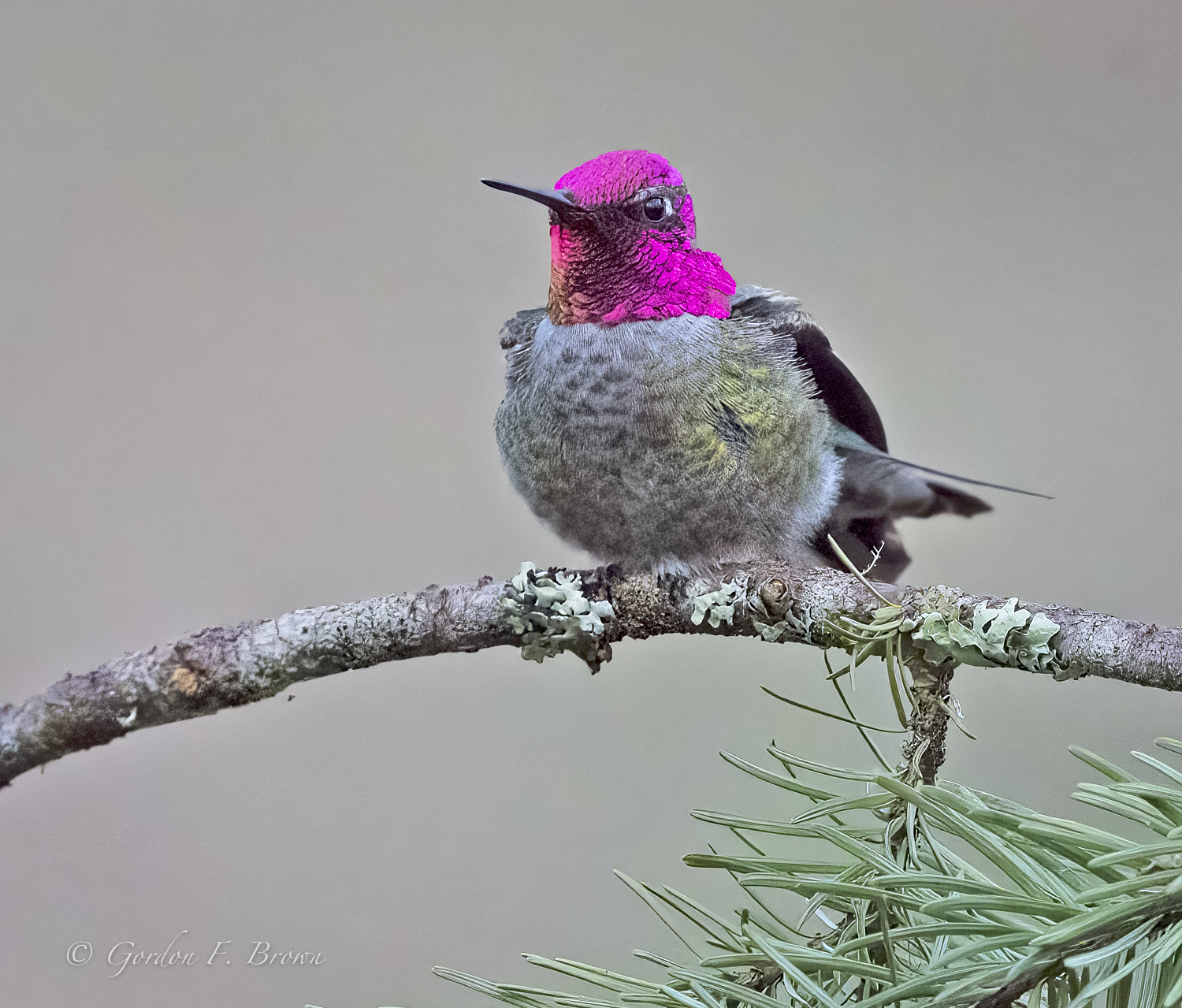
Female Anna's Hummingbird
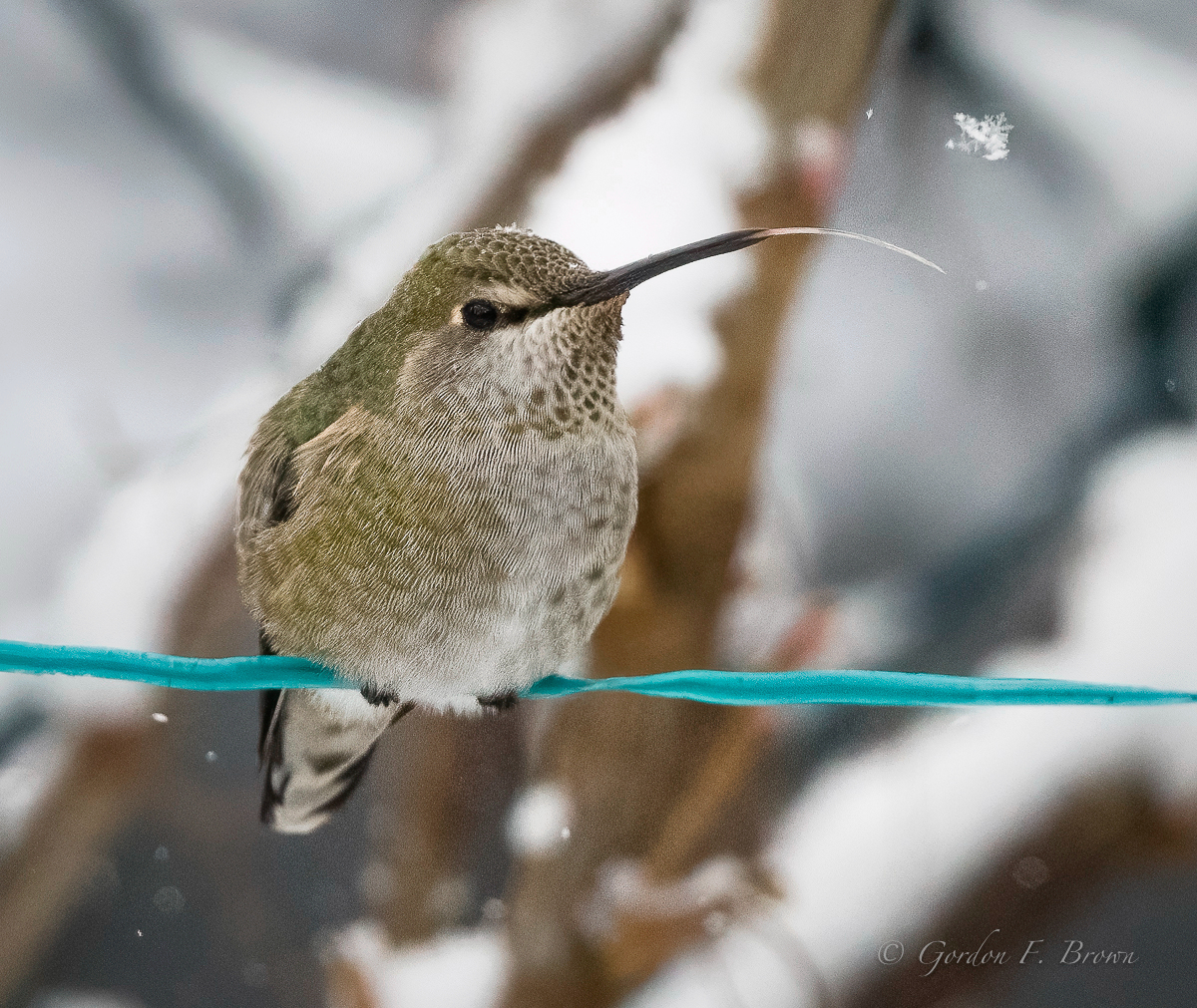
Identification Tips
<< silhouette image here >>
- Male/Female
Male: Males have an iridescent rose-pink or red crown and throat (gorget) that can appear dark in low light. They have a green back and grayish underparts.
Female: Females have a green back, grayish underparts, and a smaller patch of iridescent pink on the throat. They also have a white eye ring.
- Tail, Beak, Talons/Feet
Both sexes have a broad, rounded tail with green central feathers and dark edges. Males often have more pointed tail feathers. The beak is long, straight, and slender, adapted for probing flowers for nectar. Feet are small and adapted for perching on branches and feeders.
- Coloration
Males: Bright iridescent rose-pink or red crown and gorget, green back, and grayish underparts.
Females: Green back, grayish underparts, and a small patch of iridescent pink on the throat with a white eye ring.
- Wings
Long and narrow, facilitating agile and rapid flight. Their wing beats are rapid, creating a humming sound.
- Size and Shape
Small and compact, about 4 inches long with a wingspan of around 4.5 inches.
- Habitat
Anna's Hummingbirds are found in a variety of habitats, including coastal scrub, chaparral, open woodlands, gardens, and urban areas.
- Behavior
Anna's Hummingbirds are territorial and aggressive, especially males who defend feeding territories with aerial displays. They are known for their distinctive courtship dives, where males ascend high into the air and then dive steeply, producing a loud chirping sound with their tail feathers.
- Nesting Sites and Fledglings
Nests are built by females in shrubs or trees, usually 4-20 feet above the ground. They use plant down, spider silk, and lichens to construct the nest. Females lay two eggs, and fledglings leave the nest about 3 weeks after hatching.
- Longevity
The average lifespan is about 3-5 years, but some individuals have been known to live up to 8-9 years.
- Interspecies Interactions
Anna's Hummingbirds are important pollinators for many plants. They also interact with spiders, using their webs to build nests. They may compete with other hummingbird species and pollinators for resources.
The Migration Story
Studying Anna's Hummingbirds is crucial due to their expanding range and adaptability to urban environments. They provide insights into how hummingbirds can adapt to changing climates and habitats, and their year-round presence makes them valuable for studying the impacts of urbanization and environmental changes on bird populations.
Journey North volunteers
- Report on the timing of arrival at their breeding grounds in the spring and departure during the fall migration
- Monitor the timing and routes of spring and fall migration
- Track the establishment and maintenance of breeding territories
- Report on the foraging activities and shifts in diet throughout the year
With this volunteer-contributed data, researchers gain insights into the timing of annual life cycle events, location of migration routes, critical stopover locations, and natural resources requirements needed to sustain the migration.
- Spring Migration
Spring migration is minimal for Anna's Hummingbirds. Those that migrate move to higher elevations in the breeding range as early as February.
- Breeding and Nesting
Breeding occurs from December through early summer. Males perform elaborate courtship displays, and females take on all nesting duties, from building the nest to caring for the young.
- Nesting Habits
Preferred habitats include coastal scrub, chaparral, open woodlands, gardens, and urban areas with abundant flowering plants.
- Fall Migration
In fall, some Anna's Hummingbirds may move to lower elevations or more sheltered areas to avoid cold weather, but many remain in their breeding range year-round.
Annual Cycle and Distribution
<< Migration map coming soon >>
- January: Year-Round Residents
Anna's Hummingbirds are generally found along the Pacific Coast from southern Alaska to Baja California. They remain in their territories, focusing on feeding and maintaining energy levels.
- February: Early Breeding
Breeding activity increases. Males perform courtship dives, and females start building nests in preparation for laying eggs.
- March: Nesting Season
Nesting continues in full swing. Females lay eggs and begin incubating them while males continue to defend their territories and display for additional mates.
- April: Raising Young
Females incubate eggs and care for hatchlings. The young are fed frequently and grow rapidly, preparing to fledge in a few weeks.
- May: Fledging
The first broods of the year begin to fledge. Females may start second broods while the fledglings learn to forage and become independent.
- June: Second Broods
Nesting and raising second broods continue. Females remain busy with nesting duties, and the young from the first broods establish their own territories.
- July: Peak Activity
Hummingbird activity remains high, with fledglings from second broods starting to leave the nest. Males continue to defend territories vigorously.
- August: Preparing for Fall
Some individuals may begin moving to lower elevations or more protected areas. Feeding intensifies as they prepare for colder months.
- September: Transition Period
Hummingbirds adjust to changing conditions, with some moving to more sheltered locations. They remain in gardens and urban areas with reliable food sources.
- October: Settling In
Most Anna's Hummingbirds settle into their fall and winter territories. They continue to feed actively, focusing on building energy reserves.
- November: Wintering
Wintering in their established territories, Anna's Hummingbirds are found along the Pacific Coast. They maintain their feeding routines and territorial behaviors.
- December: Continuing Breeding
Breeding activities may begin again, particularly in southern parts of their range. Males perform courtship displays, and females start preparing for the next nesting cycle.
About Allens
Hummingbirds
Allen's Hummingbirds (Selasphorus sasin) are primarily found along the western coast of North America, from Oregon to southern California. They are known for their complex migration patterns, with some populations being partially migratory and others resident year-round.
Male Allen's Hummingbird
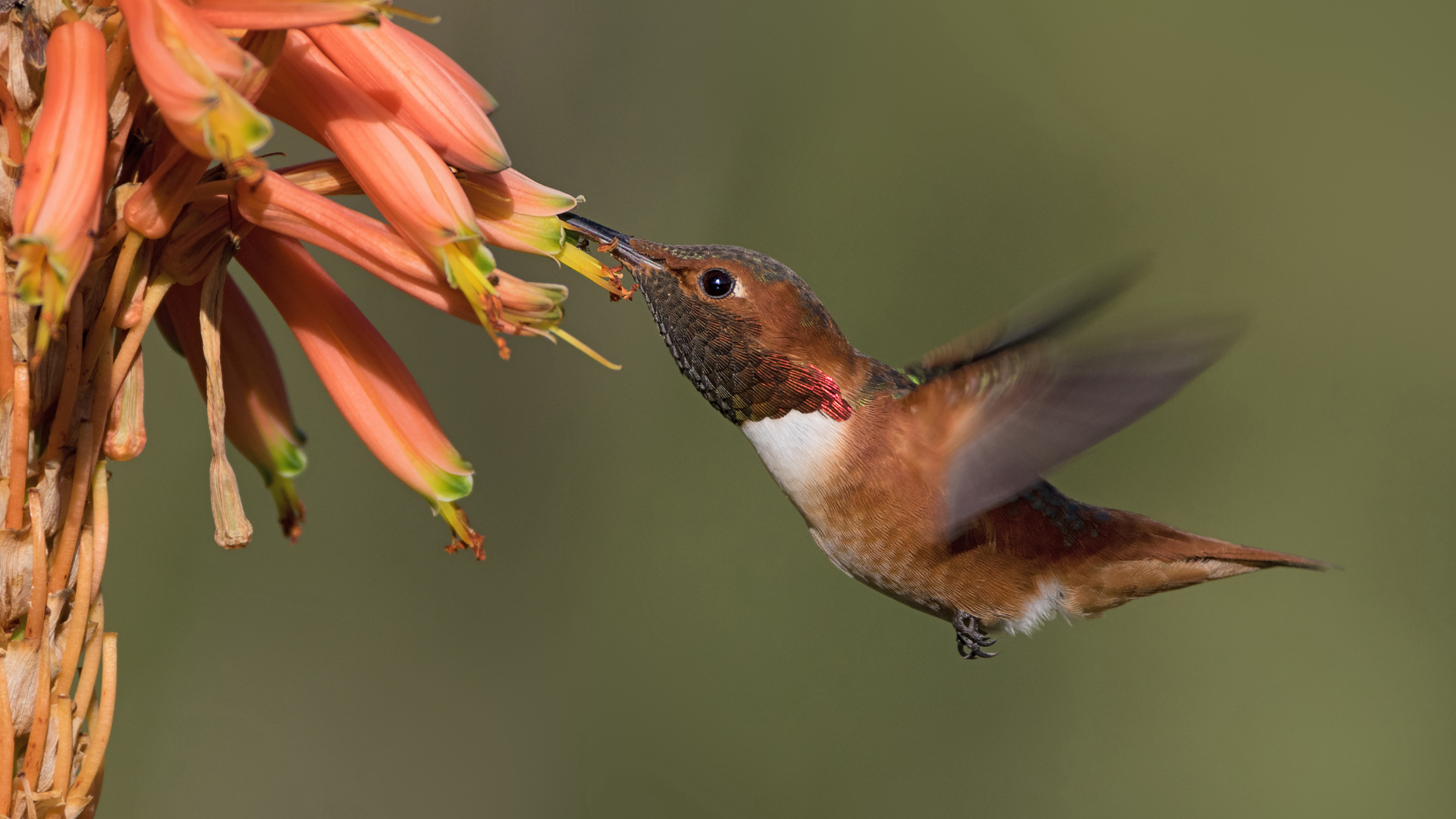
Female Allen's Hummingbird
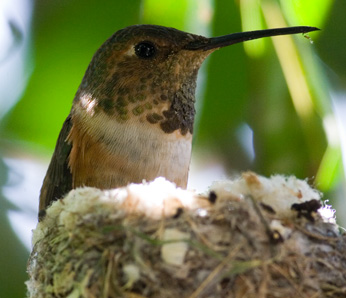
Identification Tips
<< silhouette image here >>
- Male/Female
Male: Males have an iridescent orange-red throat (gorget), green back, and white underparts with green speckling on the sides.
Female: Females are green above and buffy-gray below, with green speckling on the throat and breast.
- Tail, Beak, Talons/Feet
Both sexes have a slightly forked tail with green central feathers and rufous edges. Beaks are long, straight, and slender, suitable for accessing deep flower nectaring. Feet are small and adapted for perching and gripping flowers.
- Coloration
Males: Iridescent orange-red gorget, green back, and white underparts with green speckling.
Females: Green above, buffy-gray below, with green speckling on the throat and breast.
- Wings
Long and narrow, allowing for rapid and agile flight. Wing beats are rapid, producing a humming sound.
- Size and Shape
Small and slender, about 3.5 inches long with a wingspan of approximately 4.5 inches.
- Habitat
Allen's Hummingbirds inhabit a variety of habitats, including coastal scrub, chaparral, gardens, and parks, especially along the Pacific Coast.
- Behavior
Territorial during the breeding season, with males performing elaborate courtship displays to attract females. They are known for their aerial displays and aggressive behavior towards intruders.
- Nesting Sites and Fledglings
Nests are built by females in shrubs or trees, usually 3-20 feet above the ground. They use plant down, spider silk, and lichens to construct the nest. Females lay two eggs, and fledglings leave the nest about 3 weeks after hatching.
- Longevity
The average lifespan is about 3-5 years, but some individuals may live longer under favorable conditions.
- Interspecies Interactions
Allen's Hummingbirds play a crucial role as pollinators in coastal habitats. They may interact with other bird species and compete for resources such as nesting sites and food.
The Migration Story
Studying Allen's Hummingbirds is crucial for understanding the factors driving their varied migration patterns and their responses to environmental changes along the western coast. They also play a significant role in pollination, particularly in coastal habitats.
Journey North volunteers
- Report on the timing of arrival at their breeding grounds in the spring and departure during the fall migration
- Monitor the timing and routes of spring and fall migration
- Track the establishment and maintenance of breeding territories
- Report on the foraging activities and shifts in diet throughout the year
With this volunteer-contributed data, researchers gain insights into the timing of annual life cycle events, location of migration routes, critical stopover locations, and natural resources requirements needed to sustain the migration.
- Spring Migration
Spring migration begins in late winter, with Allen's Hummingbirds moving north from their wintering grounds in Mexico to breeding areas along the Pacific Coast.
- Breeding and Nesting
Breeding occurs from late winter to summer, with males arriving first to establish territories and court females. Nesting follows, with females building nests and caring for the young.
- Preferred Habitat
Preferred habitats include coastal scrub, chaparral, gardens, and parks along the Pacific Coast, where they find abundant flowering plants for nectar.
- Fall Migration
Fall migration starts in late summer or early fall, with some individuals moving south to wintering grounds in Mexico, while others remain in coastal areas year-round.
Annual Cycle and Distribution
<< Migration map coming soon >>
- January: Wintering in Mexico
During January, Allen's Hummingbirds are found in their wintering grounds in Mexico, focusing on feeding and maintaining energy levels.
- February: Early Spring Migration
Some early migrants begin moving northward from Mexico to their breeding grounds along the Pacific Coast.
- March: Arrival at Breeding Grounds
By March, Allen's Hummingbirds arrive at their breeding areas along the Pacific Coast, where males establish territories and courtship displays begin.
- April: Breeding Season Begins
Breeding activities intensify, with females building nests and laying eggs. Males defend territories vigorously.
- May: Nesting and Raising Young
Nesting continues, and young hatchlings are raised. Both parents are involved in feeding and caring for the young.
- June: Fledging
The first broods begin to fledge in June, while some females may start second broods. Activity remains high as hummingbirds forage for food.
- July: Second Broods
Nesting and raising second broods continue, with males and females busy feeding and defending territories.
- August: Preparing for Fall Migration
Some individuals may start moving southward in preparation for fall migration, while others remain in coastal areas year-round.
- September: Peak Migration South
Peak fall migration occurs, with Allen's Hummingbirds moving south to wintering grounds in Mexico.
- October: Settling into Wintering Grounds
Most Allen's Hummingbirds have reached their wintering grounds in Mexico by October, where they spend the winter months.
- November: Wintering
Wintering in Mexico, Allen's Hummingbirds focus on feeding and maintaining energy reserves.
- December: Continuing Wintering
The wintering period continues, with hummingbirds remaining in Mexico until the cycle repeats in the following spring.
About Costa's
Hummingbirds
Costa's Hummingbirds (Calypte costae) are primarily found in the southwestern United States and northern Mexico. They are non-migratory or only partially migratory, with some individuals moving to lower elevations in winter.
Male Costa's Hummingbird
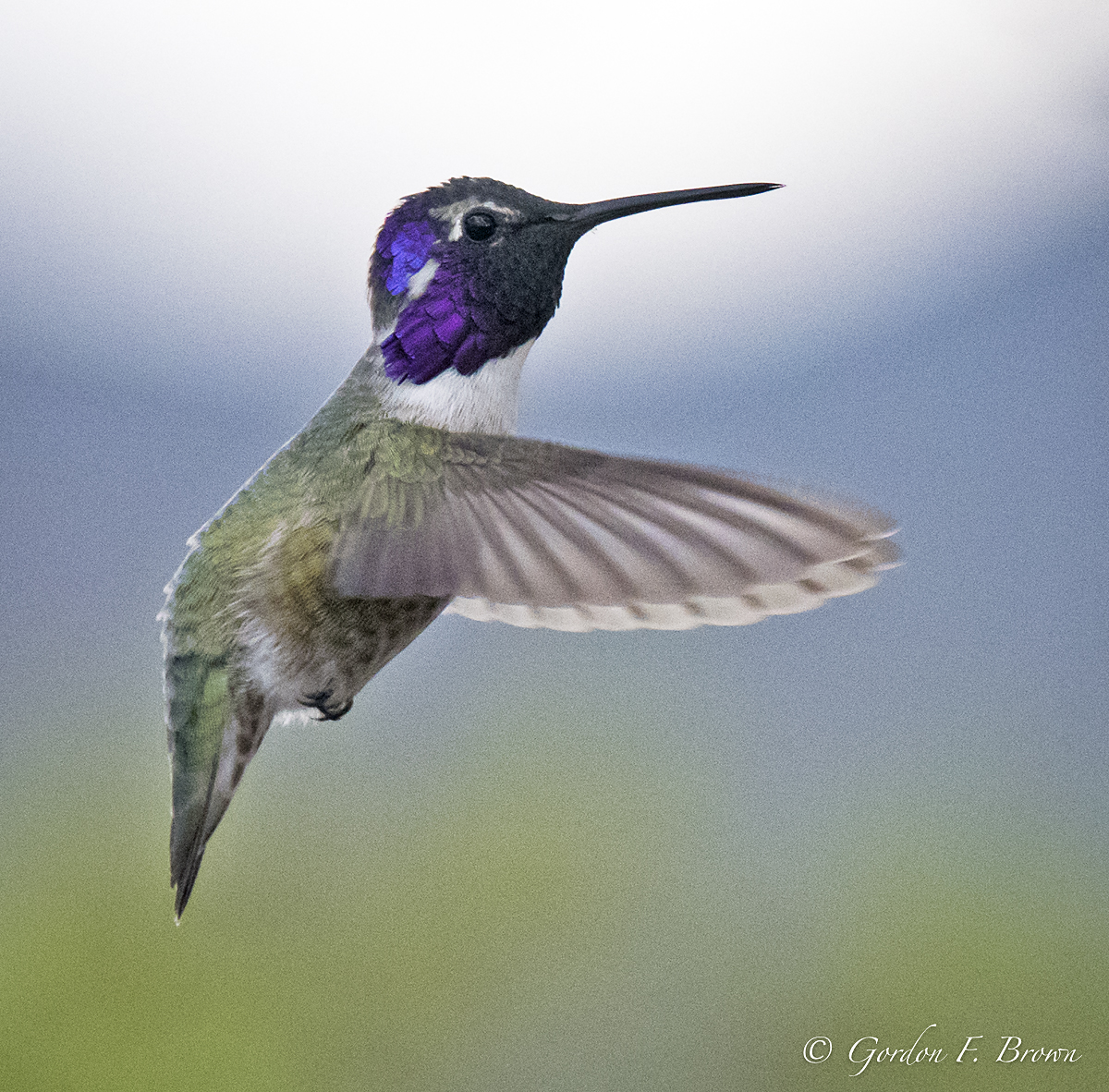
Female Costa's Hummingbird
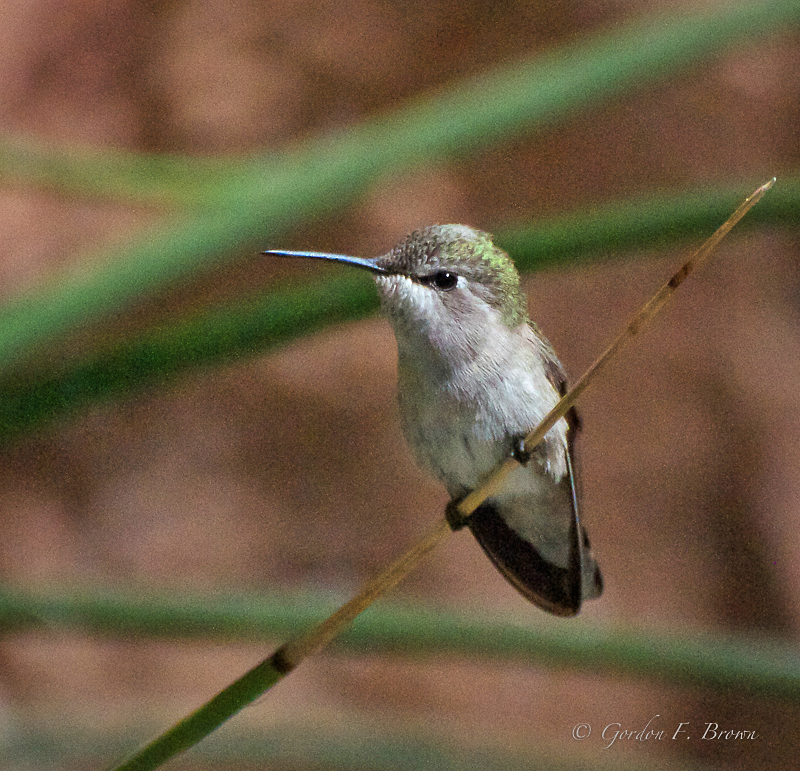
Identification Tips
<< silhouette image here >>
- Male/Female
Male: Males have a vibrant purple crown and throat (gorget), with greenish upperparts and grayish underparts.
Female: Females are pale green above and grayish-white below, with faint streaking on the throat.
- Tail, Beak, Talons/Feet
Both sexes have a slightly forked tail with green central feathers and white tips. Beaks are long, straight, and slender, adapted for accessing nectar from tubular flowers. Feet are small and adapted for perching on branches and flowers.
- Coloration
Males: Vibrant purple crown and throat, greenish upperparts, and grayish underparts.
Females: Pale green above, grayish-white below, with faint streaking on the throat.
- Wings
Long and narrow, allowing for rapid and precise flight maneuvers. Wing beats are rapid, producing a humming sound.
- Size and Shape
Small and slender, about 3.5 inches long with a wingspan of approximately 4.5 inches.
- Habitat
Costa's Hummingbirds prefer desert scrub, chaparral, and urban areas with suitable flowering plants, especially in arid regions.
- Behavior
Territorial during the breeding season, with males performing courtship displays to attract females. They may also aggressively defend feeding territories.
- Nesting Sites and Fledglings
Nests are built by females in shrubs or trees, often positioned low to the ground. They use plant down, spider silk, and lichens to construct the nest. Females lay two eggs, and fledglings leave the nest about 3 weeks after hatching.
- Longevity
The average lifespan is about 3-5 years, but some individuals may live longer under favorable conditions.
- Interspecies Interactions
Costa's Hummingbirds play a crucial role as pollinators in desert ecosystems. They may interact with other bird species and compete for resources such as nesting sites and food.
The Migration Story
Studying Costa's Hummingbirds helps understand their unique adaptations to arid environments and their responses to urbanization and climate change in the southwestern United States. They are important pollinators in desert ecosystems.
Journey North volunteers
- Report on the timing of arrival at their breeding grounds in the spring and departure during the fall migration
- Monitor the timing and routes of spring and fall migration
- Track the establishment and maintenance of breeding territories
- Report on the foraging activities and shifts in diet throughout the year
With this volunteer-contributed data, researchers gain insights into the timing of annual life cycle events, location of migration routes, critical stopover locations, and natural resources requirements needed to sustain the migration.
- Spring Migration
Spring migration is minimal for Costa's Hummingbirds, with some individuals moving to lower elevations as winter ends.
- Breeding and Nesting
Breeding occurs from late winter to summer. Males establish territories and court females, and nesting follows with females building nests and caring for the young.
- Preferred Habitats
Preferred habitats include desert scrub, chaparral, and urban areas with flowering plants, especially those with tubular flowers.
- Fall Migration
Fall migration is limited, with some individuals moving to lower elevations or more sheltered areas as temperatures drop.
Annual Cycle and Distribution
<< Migration map coming soon >>
- January: Wintering in Breeding Range
During January, Costa's Hummingbirds remain in their breeding range in the southwestern United States and northern Mexico, focusing on feeding and maintaining energy levels.
- February: Early Breeding Activity
Breeding activities begin, with males establishing territories and courtship displays starting.
- March: Nesting Season Begins
Nesting activities intensify, with females building nests and laying eggs. Males defend territories vigorously.
- April: Raising Young
The first broods begin to hatch, and both parents are involved in feeding and caring for the young.
- May: Fledging
The first broods begin to fledge, while some females may start second broods.
- June: Second Broods
Nesting and raising second broods continue, with activity remaining high.
- July: Peak Activity
Hummingbird activity remains high, with fledglings becoming more independent.
- August: Preparing for Fall
Some individuals may start moving to lower elevations or more sheltered areas as temperatures begin to drop.
- September: Transition Period
Hummingbirds adjust to changing conditions, with some moving to lower elevations or more sheltered areas.
- October: Settling In
Most Costa's Hummingbirds remain in their breeding range, focusing on feeding and maintaining energy reserves.
- November: Wintering
Wintering in the same region, Costa's Hummingbirds continue to feed and maintain energy levels.
- December: Continuing Wintering
The wintering period continues, with hummingbirds remaining active in their breeding range until the cycle repeats in the following spring.
About Calliope
Hummingbirds
Calliope Hummingbirds (Selasphorus calliope) are the smallest breeding bird in North America and are primarily found in the western United States and western Canada. They undertake long migrations, traveling from their breeding grounds to wintering grounds in Mexico and Central America.
Male Calliope Hummingbird
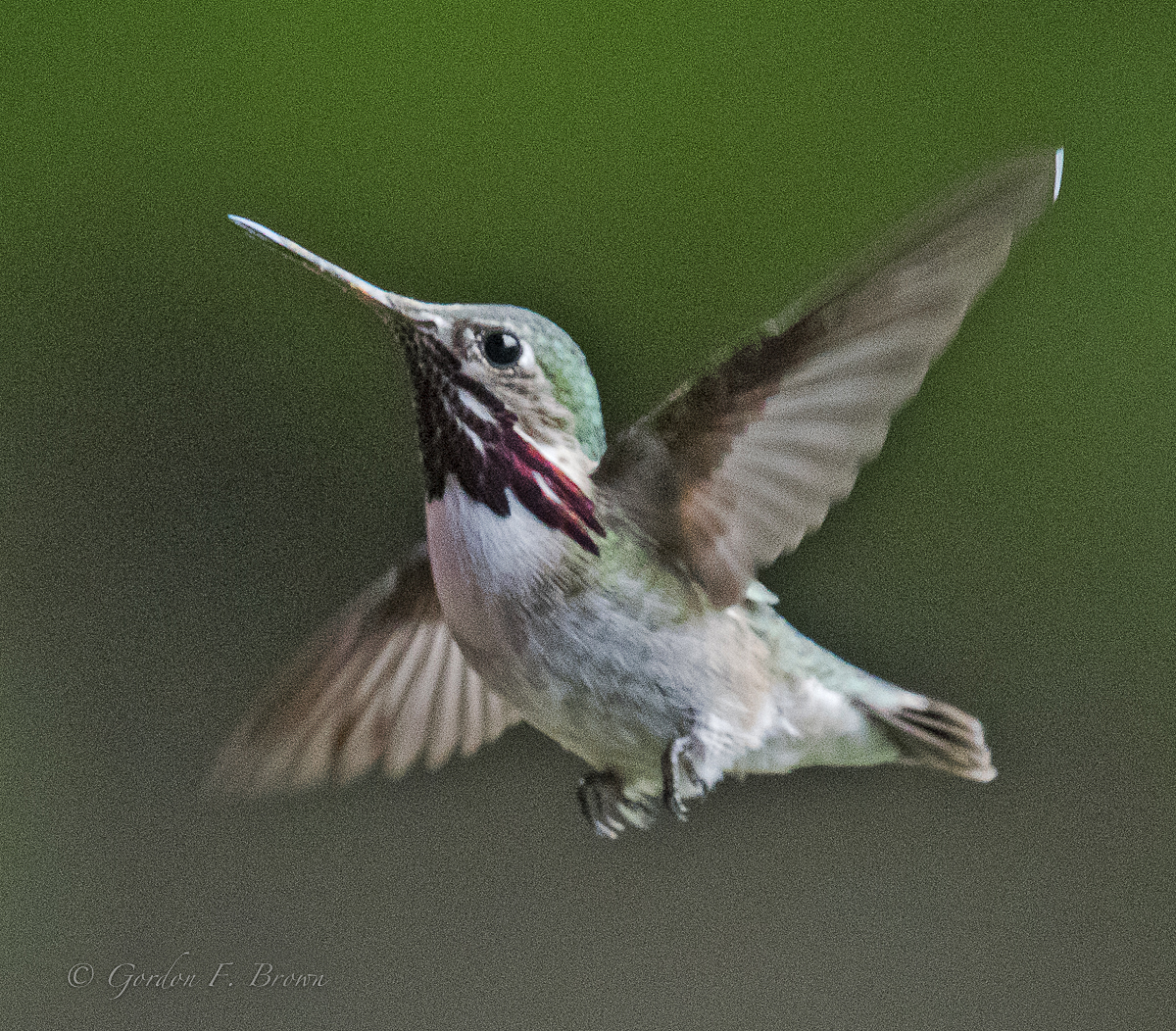
Female Calliope Hummingbird
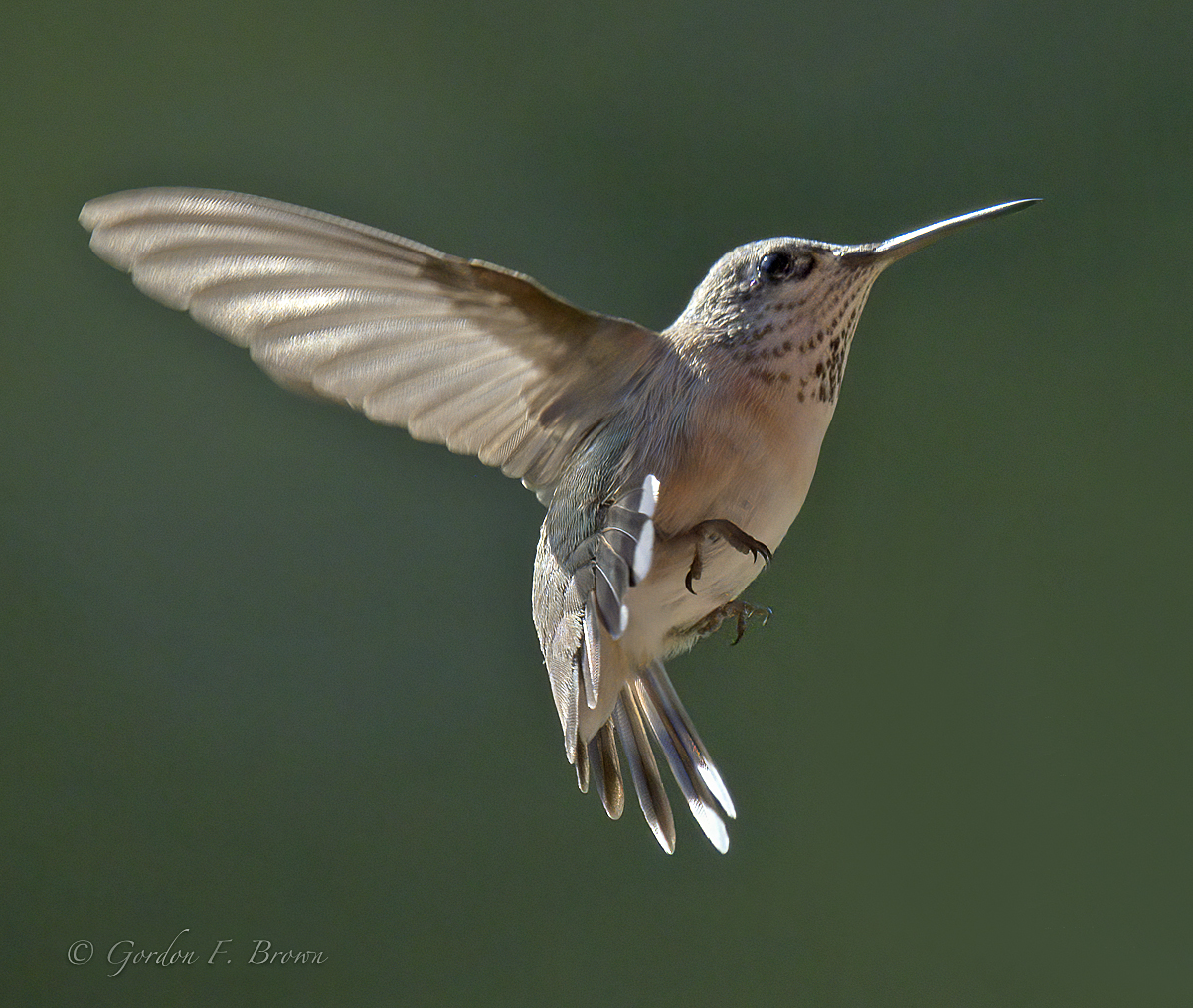
Identification Tips
<< silhouette image here >>
- Male/Female
Male: Males have a vibrant rose-red gorget with elongated gorget feathers, greenish upperparts, and white underparts.
Female: Females are pale green above and white below with fine streaking on the throat and sides.
- Tail, Beak, Talons/Feet
Both sexes have a slightly forked tail with green central feathers and white tips. Beaks are short and straight, adapted for accessing nectar from flowers. Feet are small and adapted for perching on branches and flowers.
- Coloration
Males: Vibrant rose-red gorget, greenish upperparts, and white underparts.
Females: Pale green above, white below with fine streaking on the throat and sides.
- Wings
Long and narrow, allowing for rapid and agile flight. Wing beats are rapid, producing a humming sound
- Size and Shape
Very small, about 3 inches long with a wingspan of approximately 4 inches.
- Habitat
Calliope Hummingbirds prefer montane and subalpine meadows, as well as open woodlands, especially in mountainous regions.
- Behavior
Territorial during the breeding season, with males performing aerial displays to attract females. They may also aggressively defend feeding territories.
- Nesting Sites and Fledglings
Nests are built by females in shrubs or trees, often positioned low to the ground. They use plant down, spider silk, and lichens to construct the nest. Females lay two eggs, and fledglings leave the nest about 3 weeks after hatching.
- Longevity
TThe average lifespan is about 3-5 years, but some individuals may live longer under favorable conditions.
- Interspecies Interactions
Calliope Hummingbirds interact with a variety of plants and may play a crucial role as pollinators in montane ecosystems. They may also interact with other bird species and compete for resources.
The Migration Story
Studying Calliope Hummingbirds provides insights into the ecology of high-elevation habitats and the effects of climate change on migratory bird species. They also play a crucial role in pollination in their breeding and wintering habitats.
Journey North volunteers
- Report on the timing of arrival at their breeding grounds in the spring and departure during the fall migration
- Monitor the timing and routes of spring and fall migration
- Track the establishment and maintenance of breeding territories
- Report on the foraging activities and shifts in diet throughout the year
With this volunteer-contributed data, researchers gain insights into the timing of annual life cycle events, location of migration routes, critical stopover locations, and natural resources requirements needed to sustain the migration.
- Spring Migration
Spring migration begins in late winter, with Calliope Hummingbirds moving from their wintering grounds to breeding areas in the western United States and Canada.
- Breeding and Nesting
Breeding occurs from late spring to summer. Males establish territories and court females, and nesting follows with females building nests and caring for the young.
- Preferred Habitats
Preferred habitats include montane and subalpine meadows, open woodlands, and gardens in mountainous regions.
- Fall Migration
Fall migration starts in late summer or early fall, with Calliope Hummingbirds moving from their breeding grounds to wintering areas in Mexico and Central America.
Annual Cycle and Distribution
<< Migration map coming soon >>
- January : Wintering in Mexico and Central America
During January, Calliope Hummingbirds are found in their wintering grounds in Mexico and Central America, focusing on feeding and maintaining energy levels.
- February: Early Spring Migration
Some early migrants begin moving northward from Mexico and Central America to their breeding grounds in the western United States and Canada.
- March: Arrival at Breeding Grounds
By March, Calliope Hummingbirds arrive at their breeding areas in the western United States and Canada, where males establish territories and court females.
- April: Breeding Season Begins
Breeding activities intensify, with females building nests and laying eggs. Males defend territories vigorously.
- May: Raising Young
The first broods begin to hatch, and both parents are involved in feeding and caring for the young.
- June: Fledging
The first broods begin to fledge, while some females may start second broods.s.
- July: Peak Activity
Hummingbird activity remains high, with fledglings becoming more independent.
- August: Preparing for Fall Migration
Some individuals may start moving southward in preparation for fall migration, while others remain in breeding areas until later in the season.
- September: Peak Fall Migration
Peak fall migration occurs, with Calliope Hummingbirds moving from their breeding grounds to wintering areas in Mexico and Central America.
- October: Settling into Wintering Grounds
Most Calliope Hummingbirds have reached their wintering grounds by October, where they spend the winter months.
- November: Wintering
Wintering in Mexico and Central America, Calliope Hummingbirds focus on feeding and maintaining energy reserves.
- December: Continuing Wintering
The wintering period continues, with hummingbirds remaining active in their wintering grounds until the cycle repeats in the following spring.





